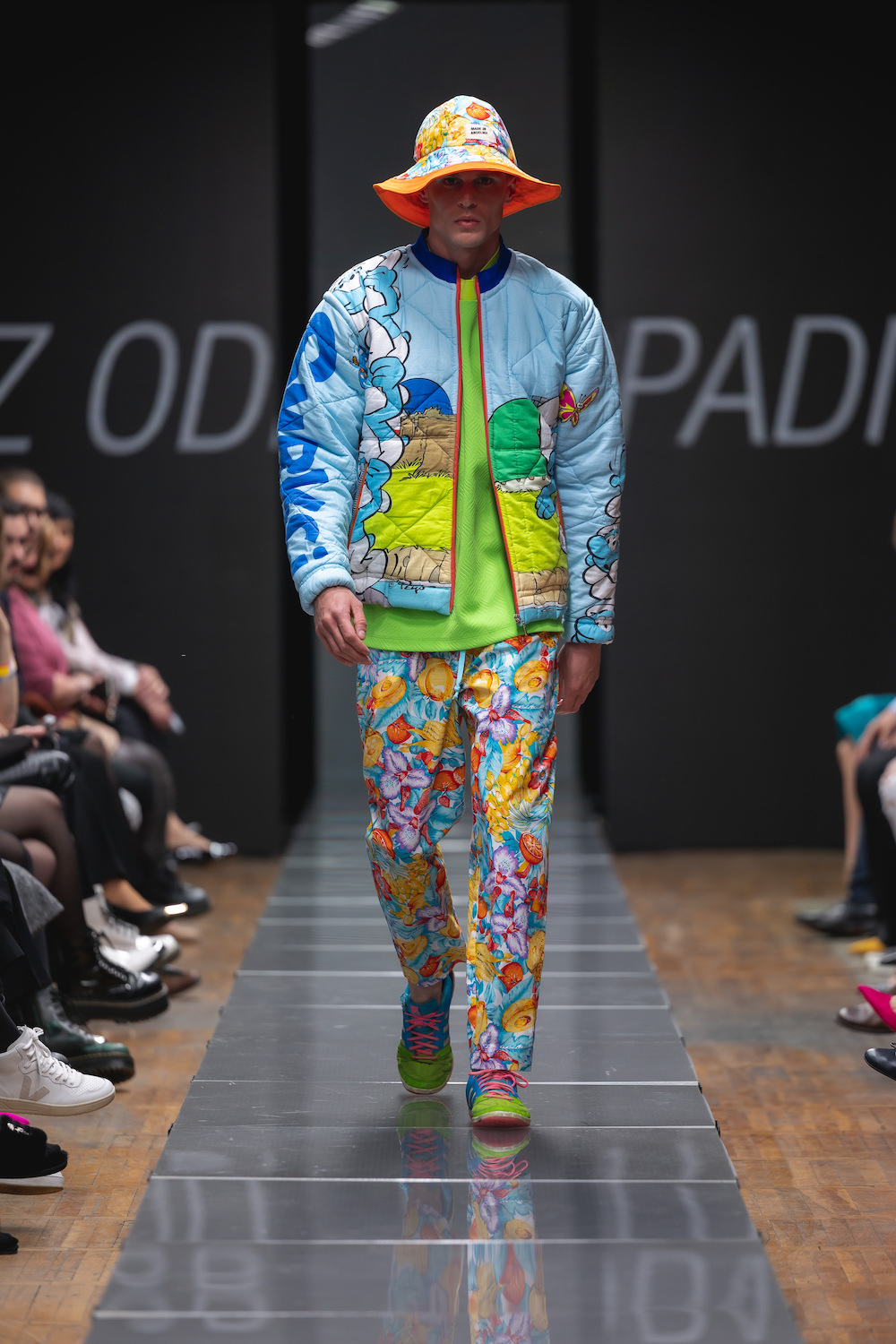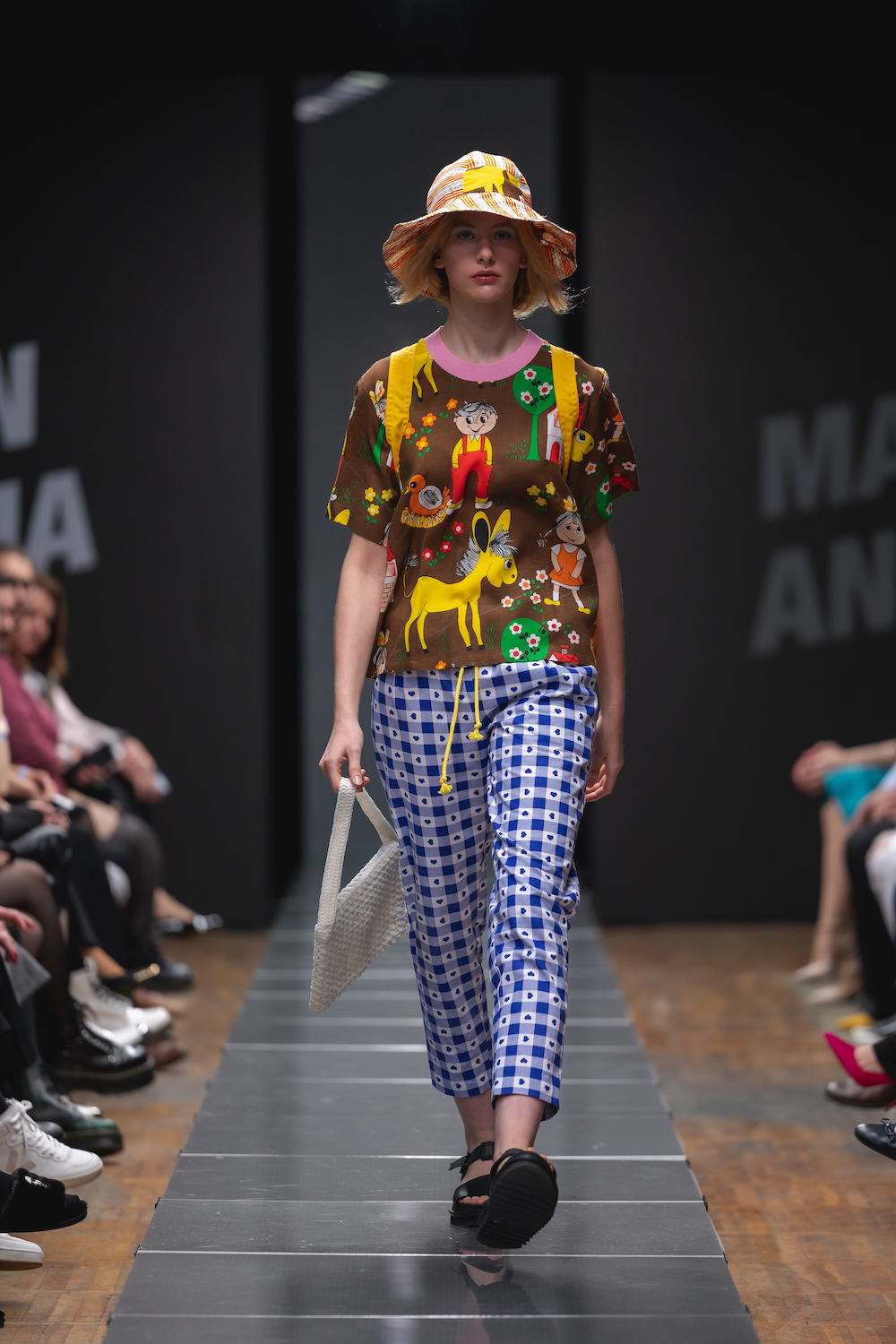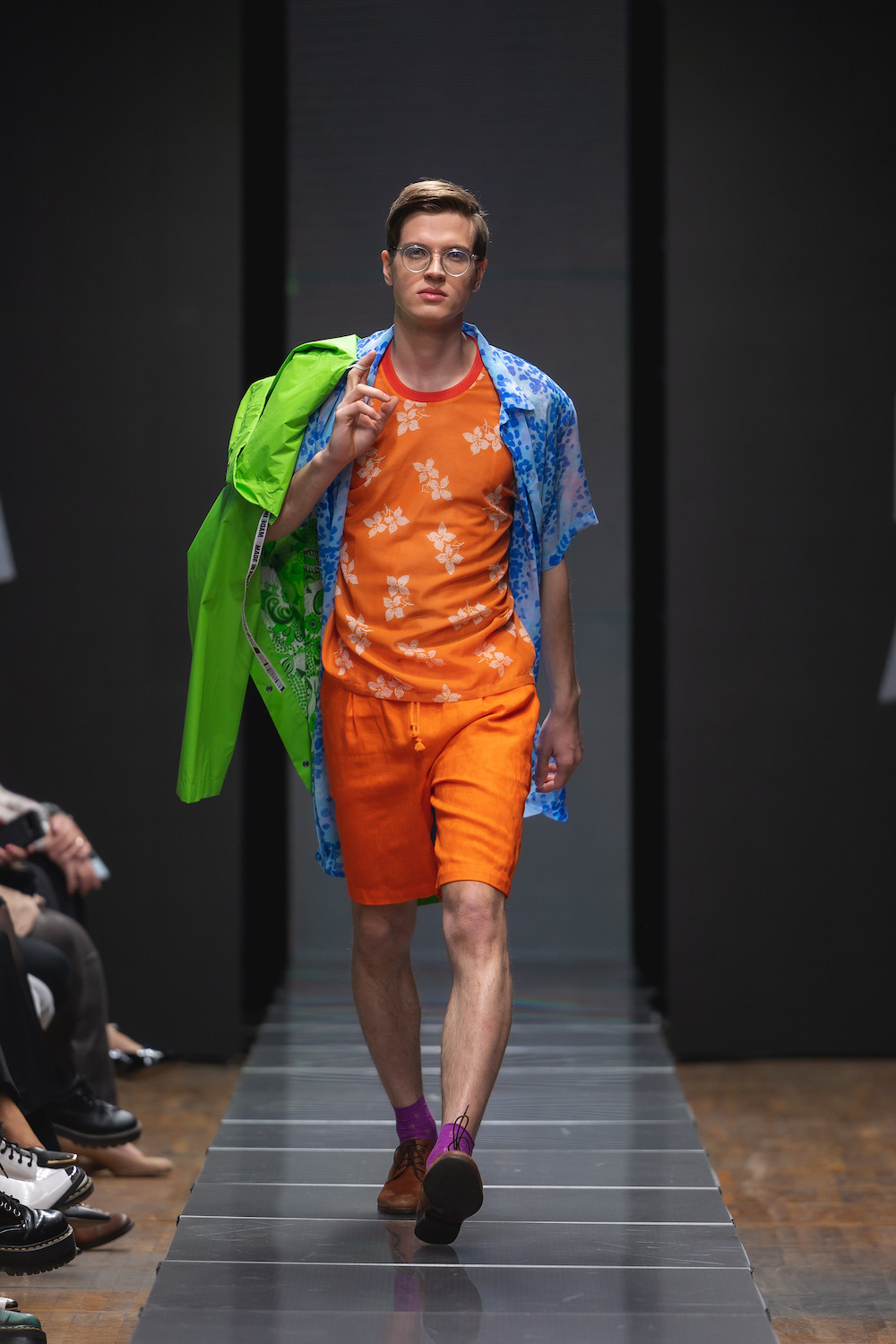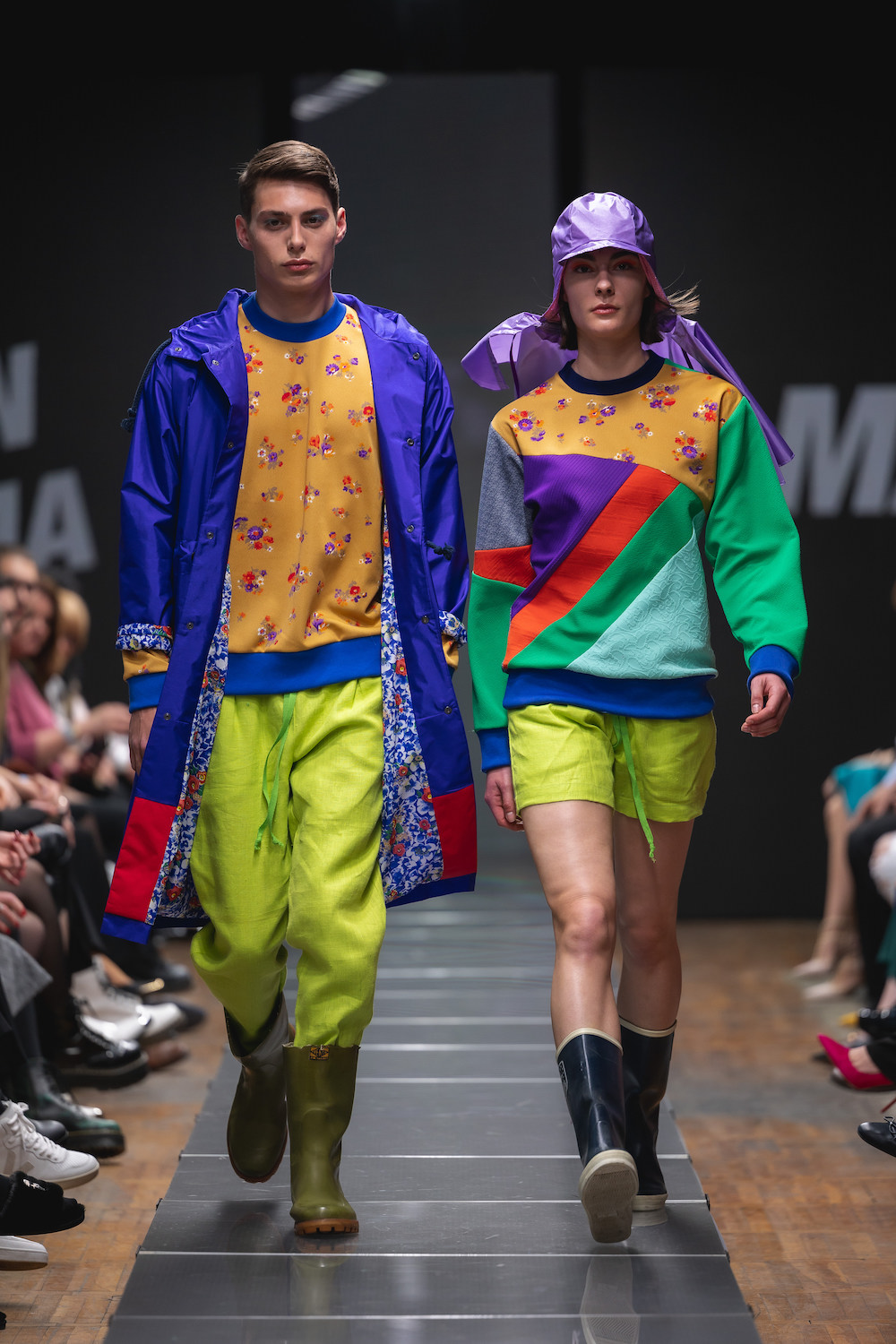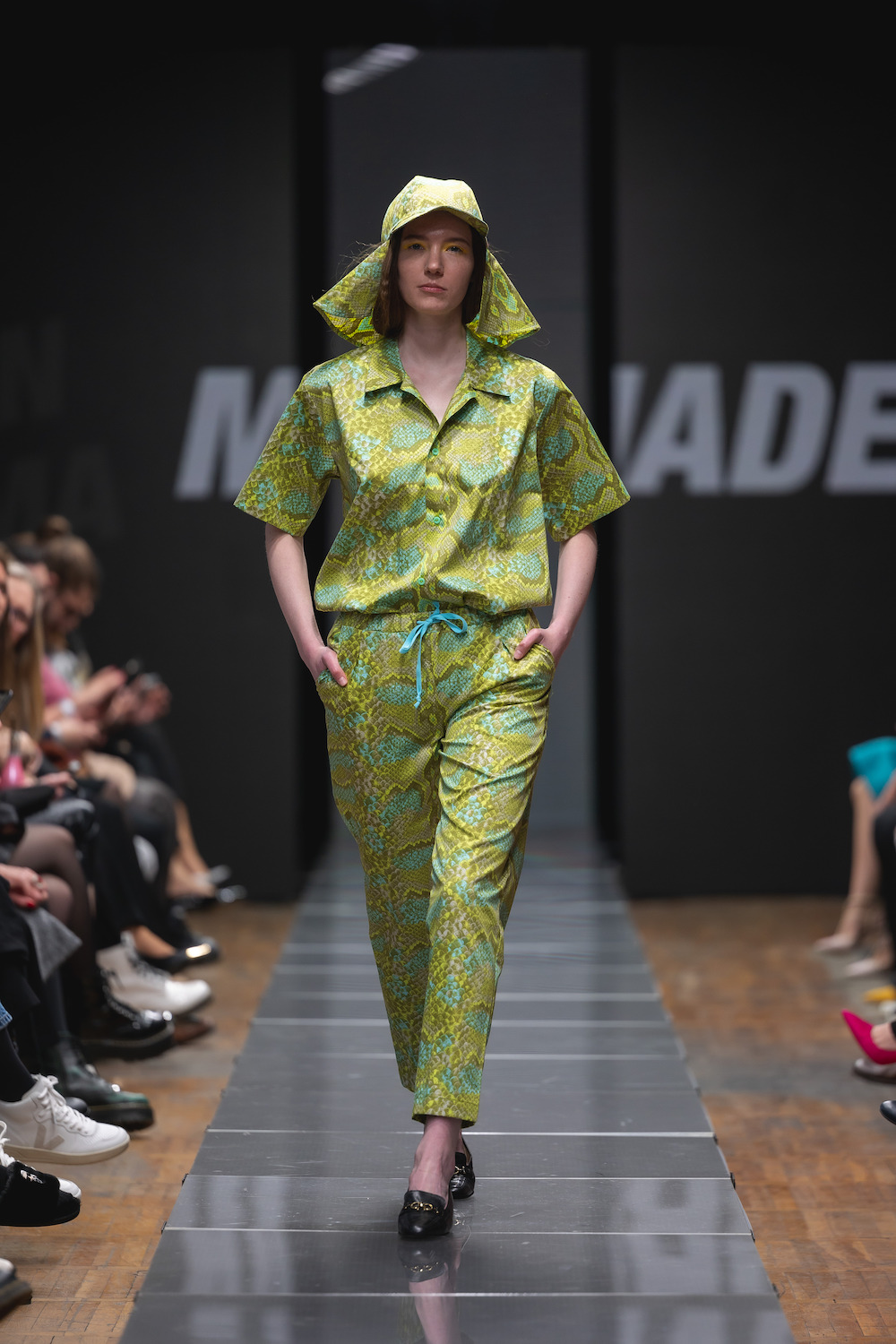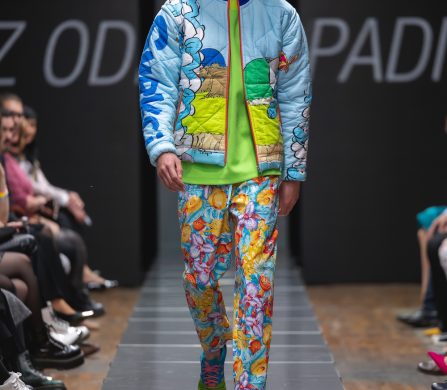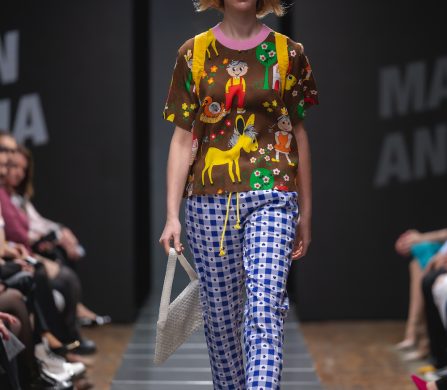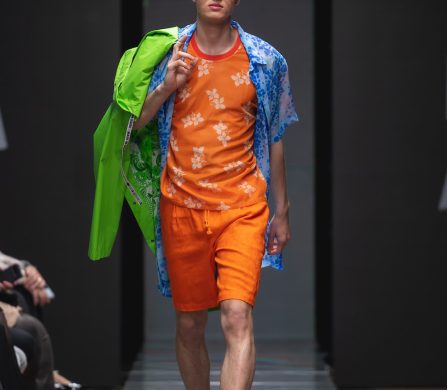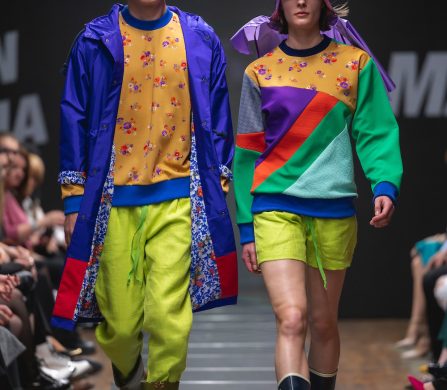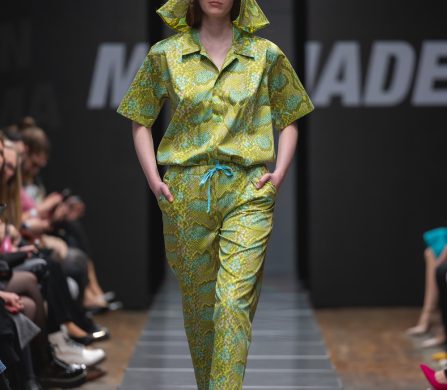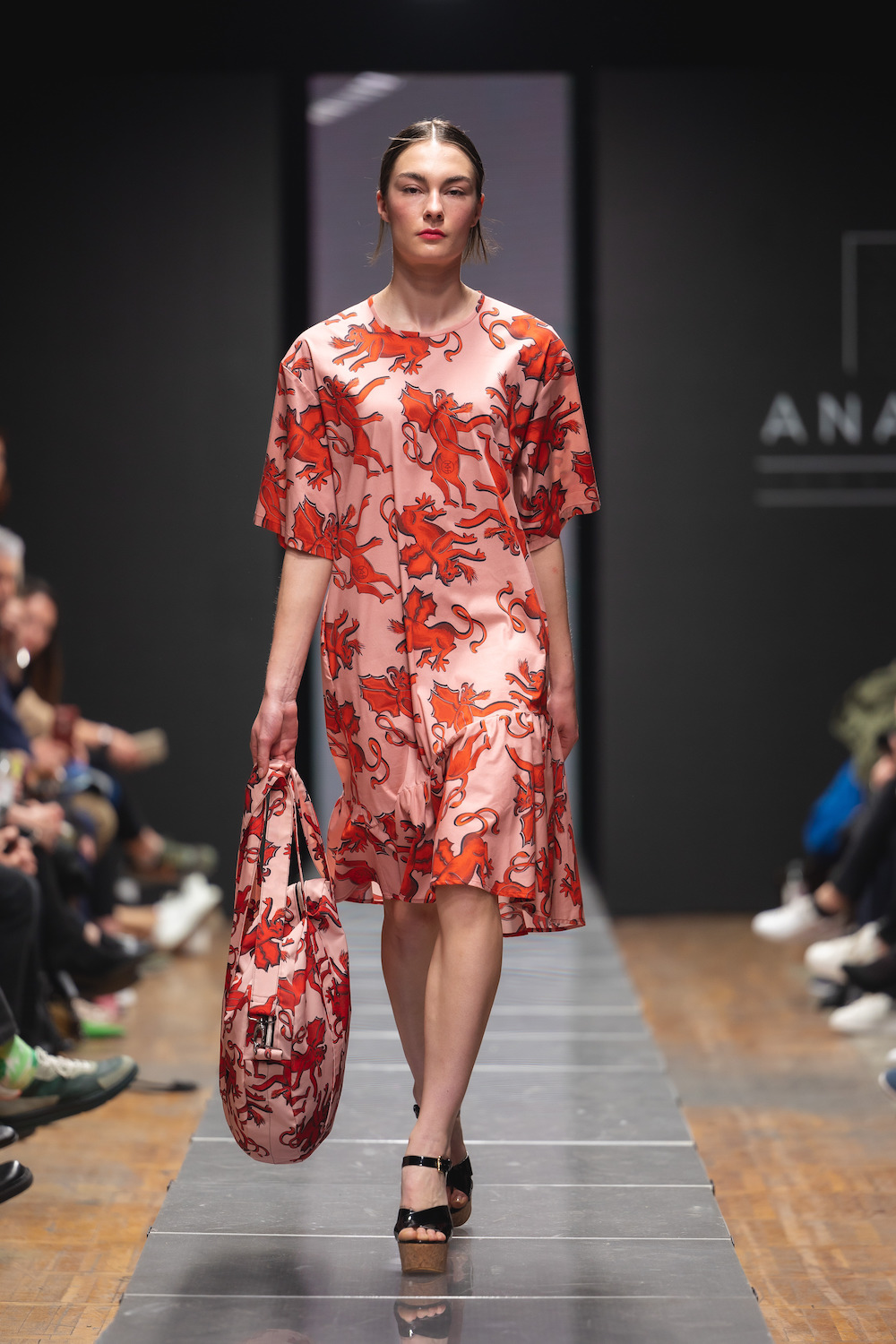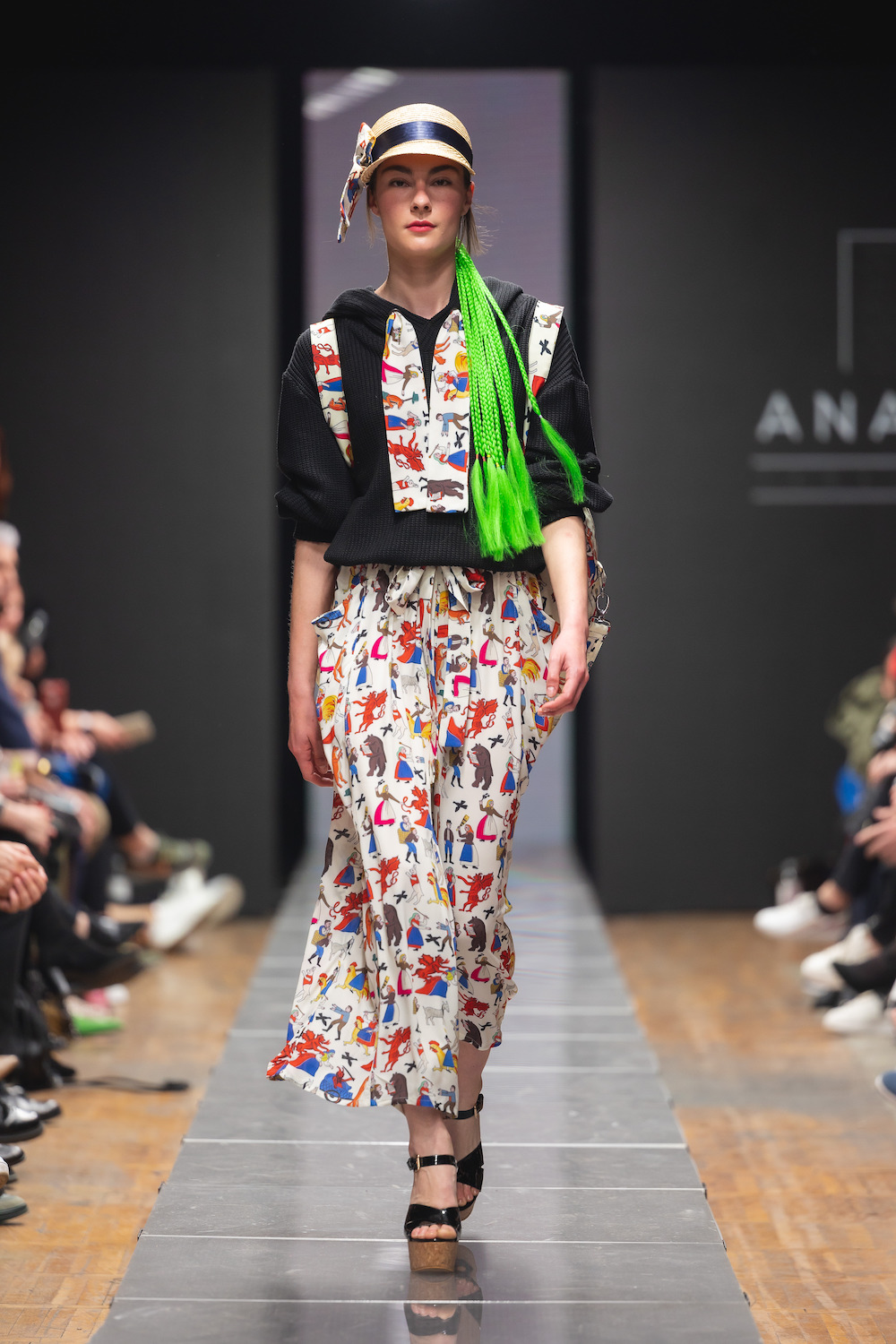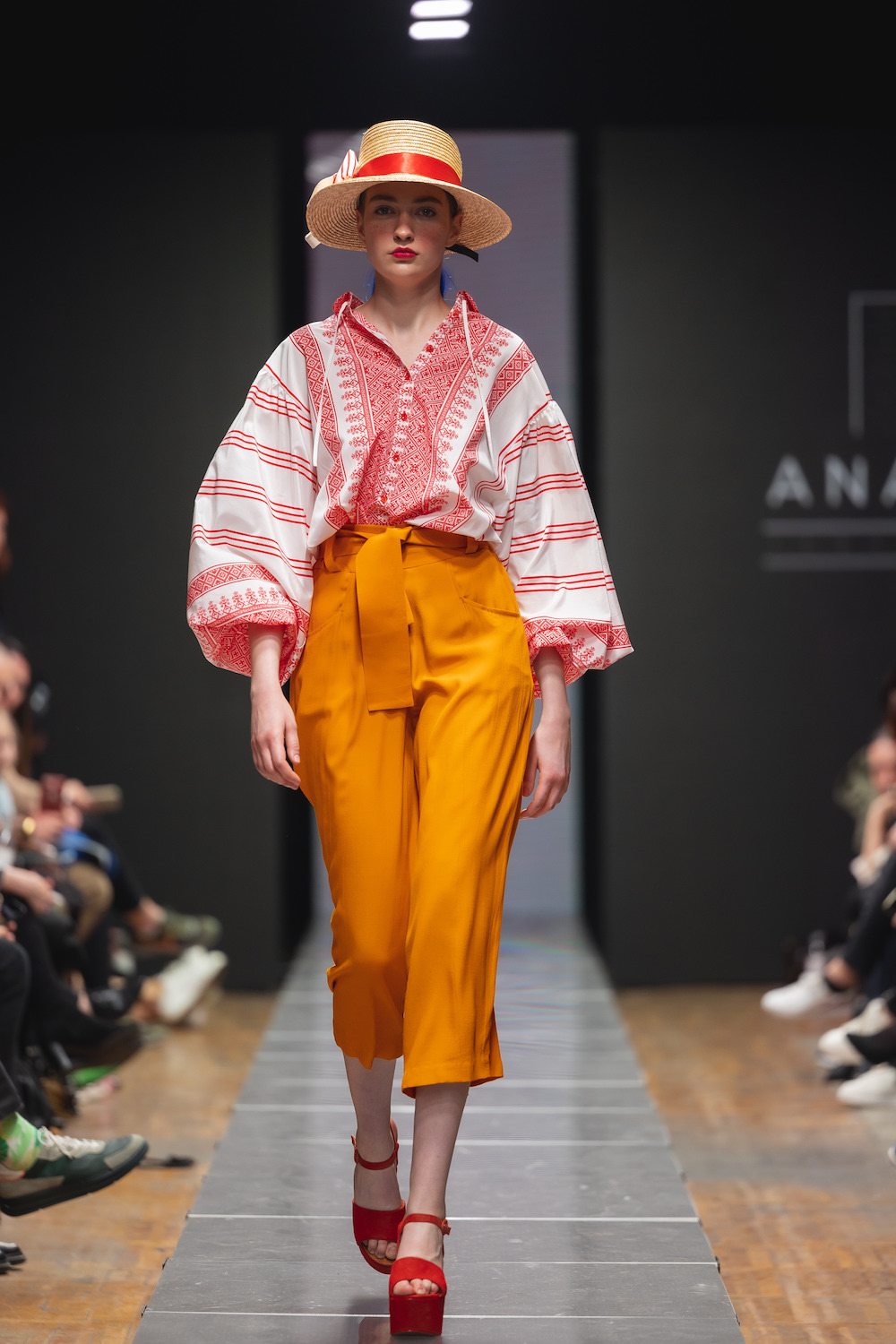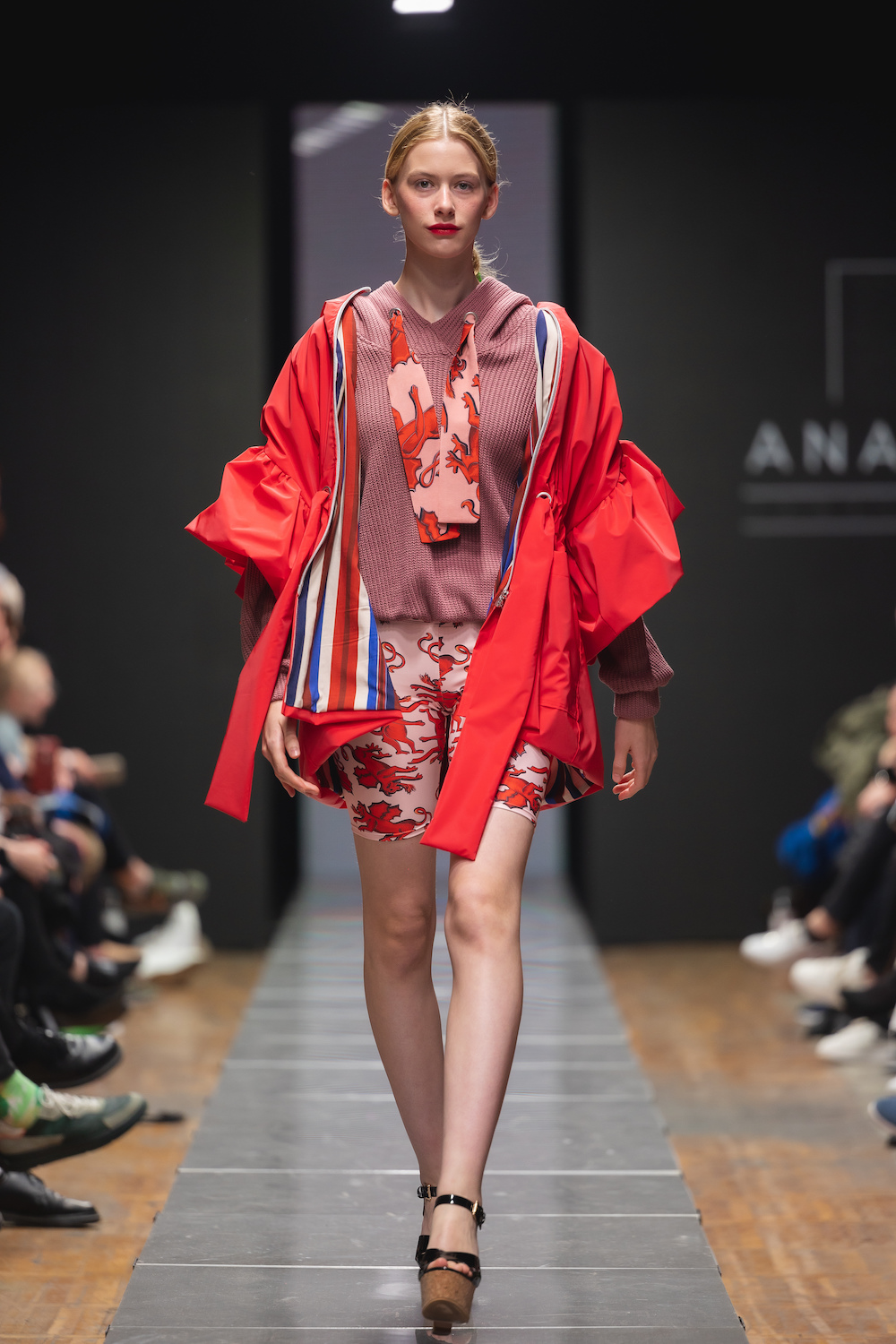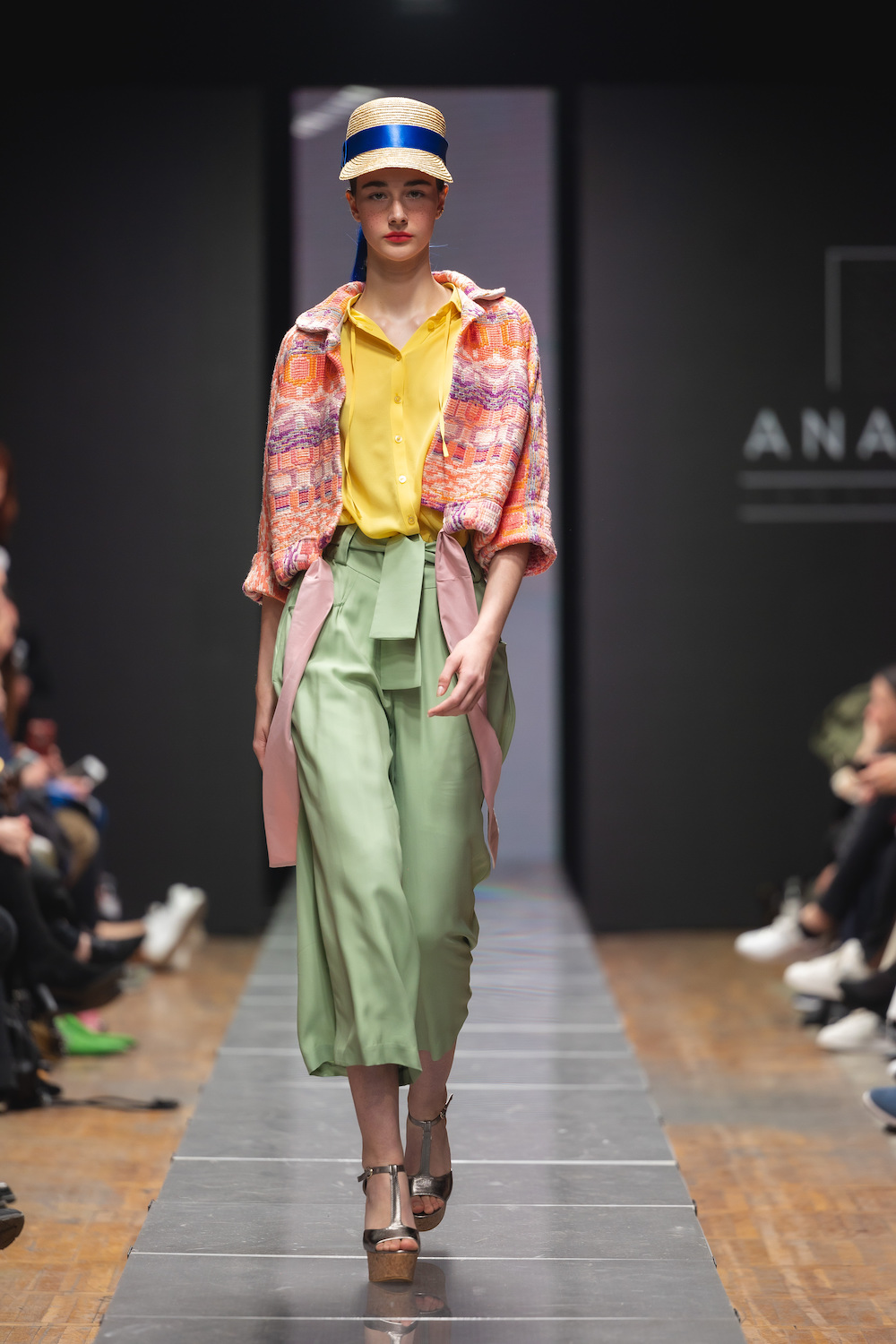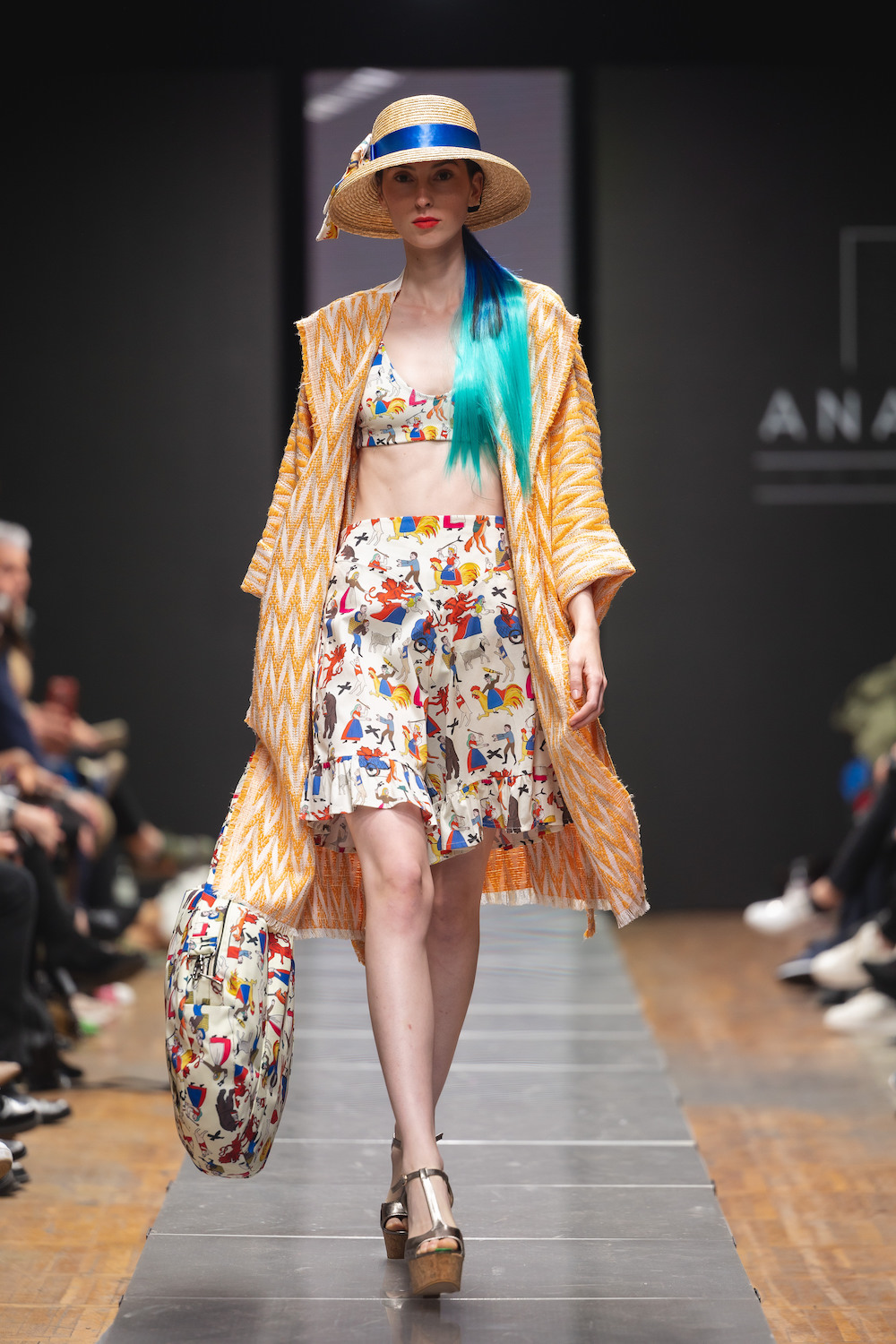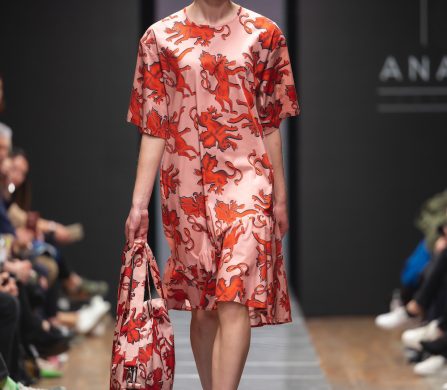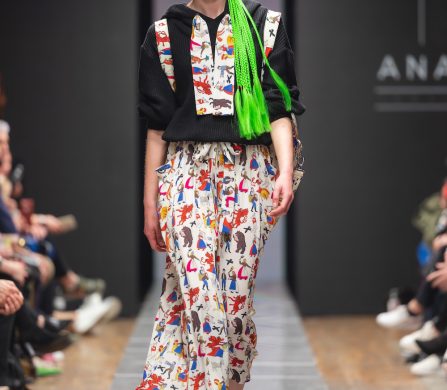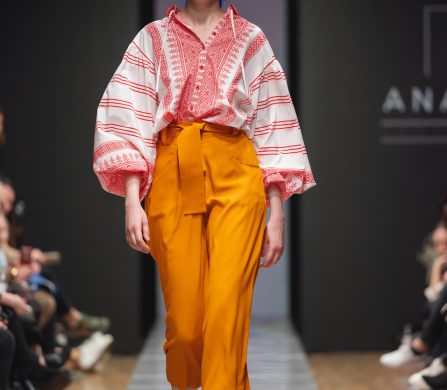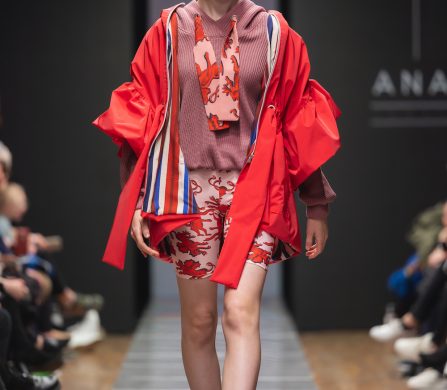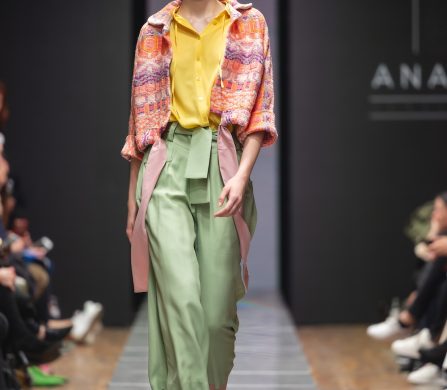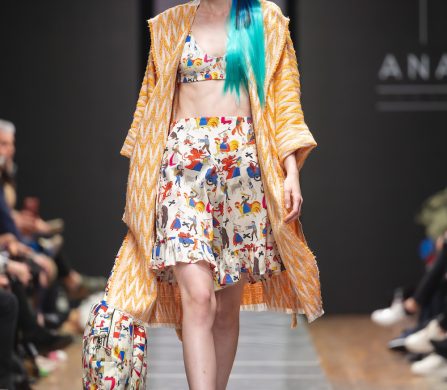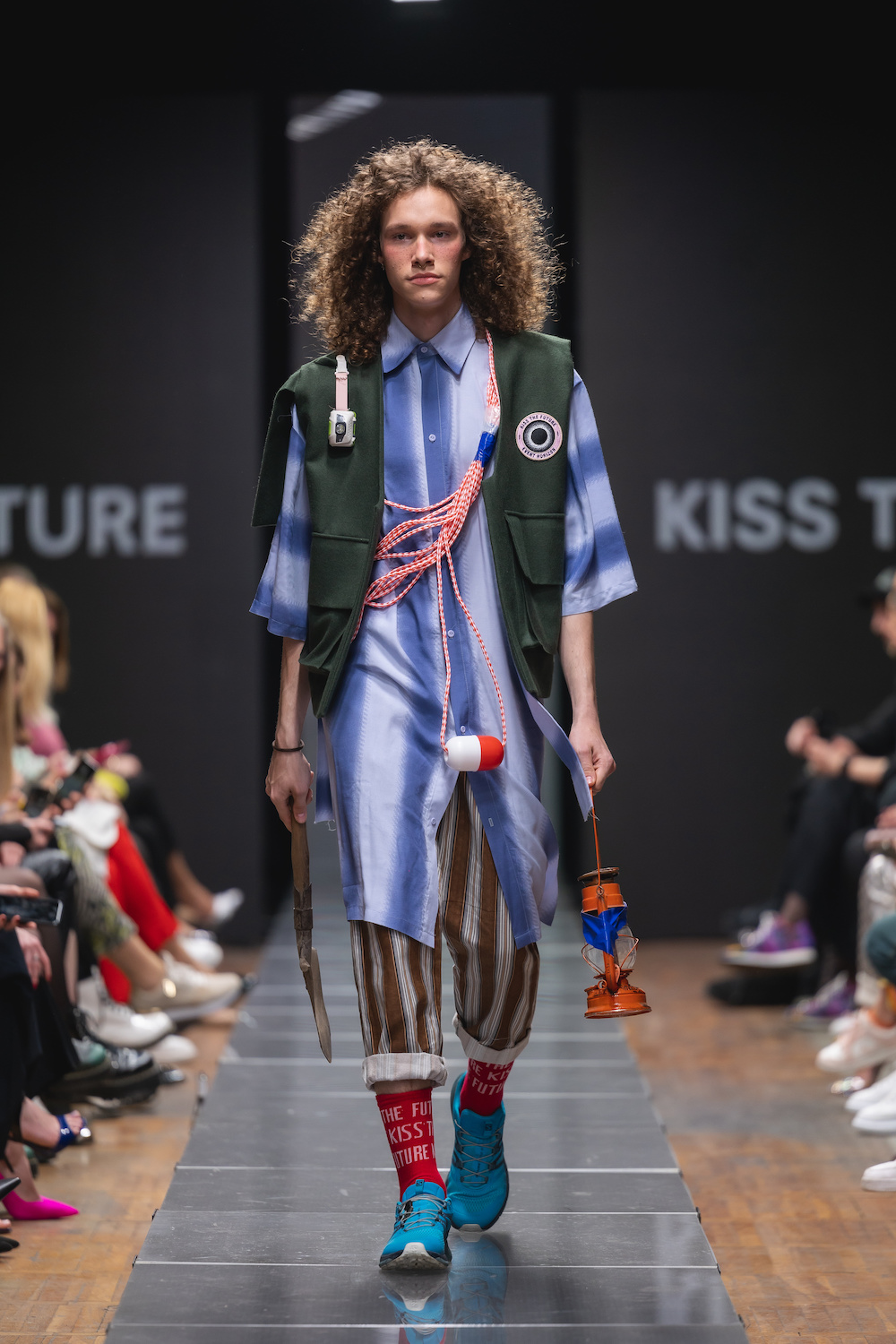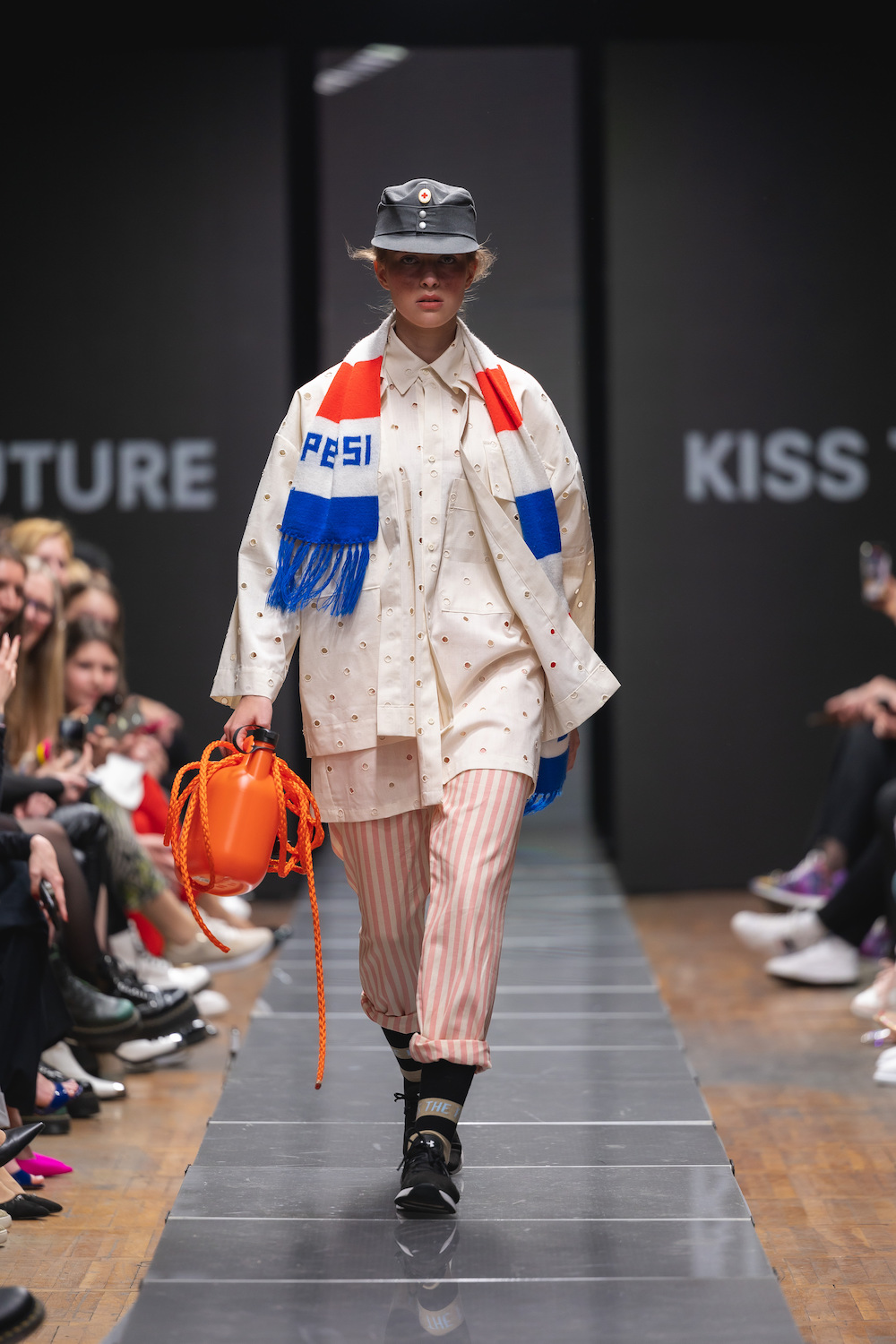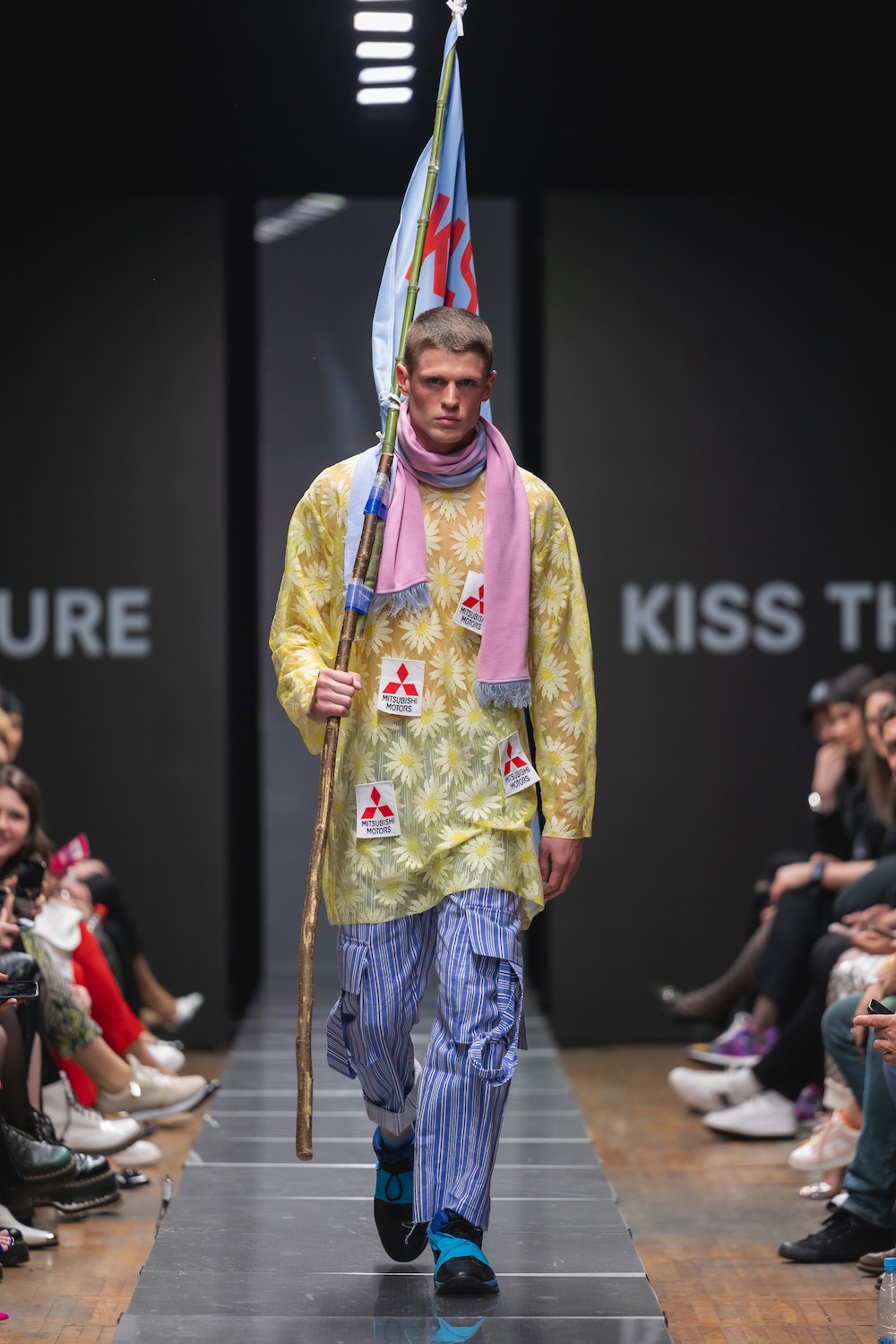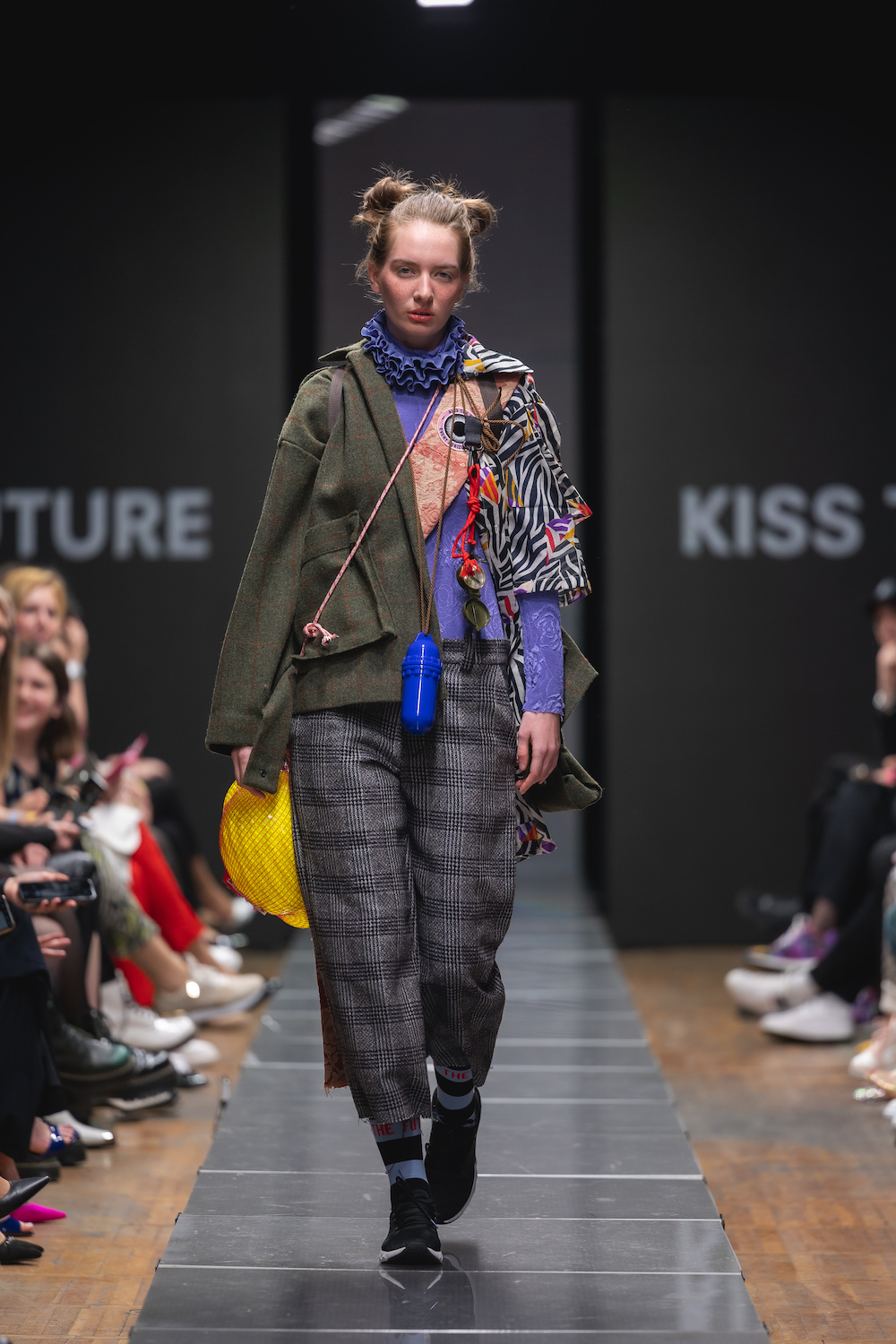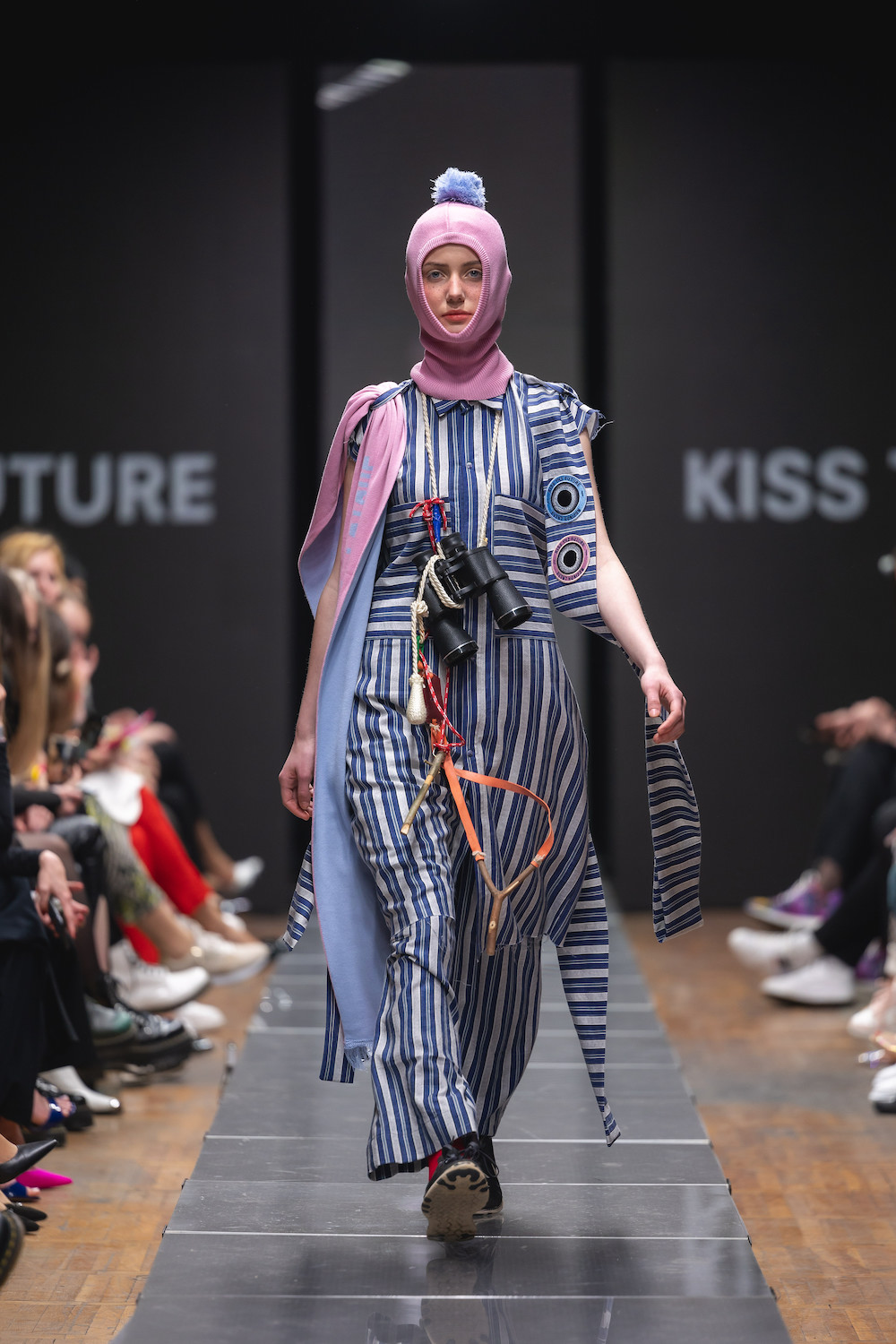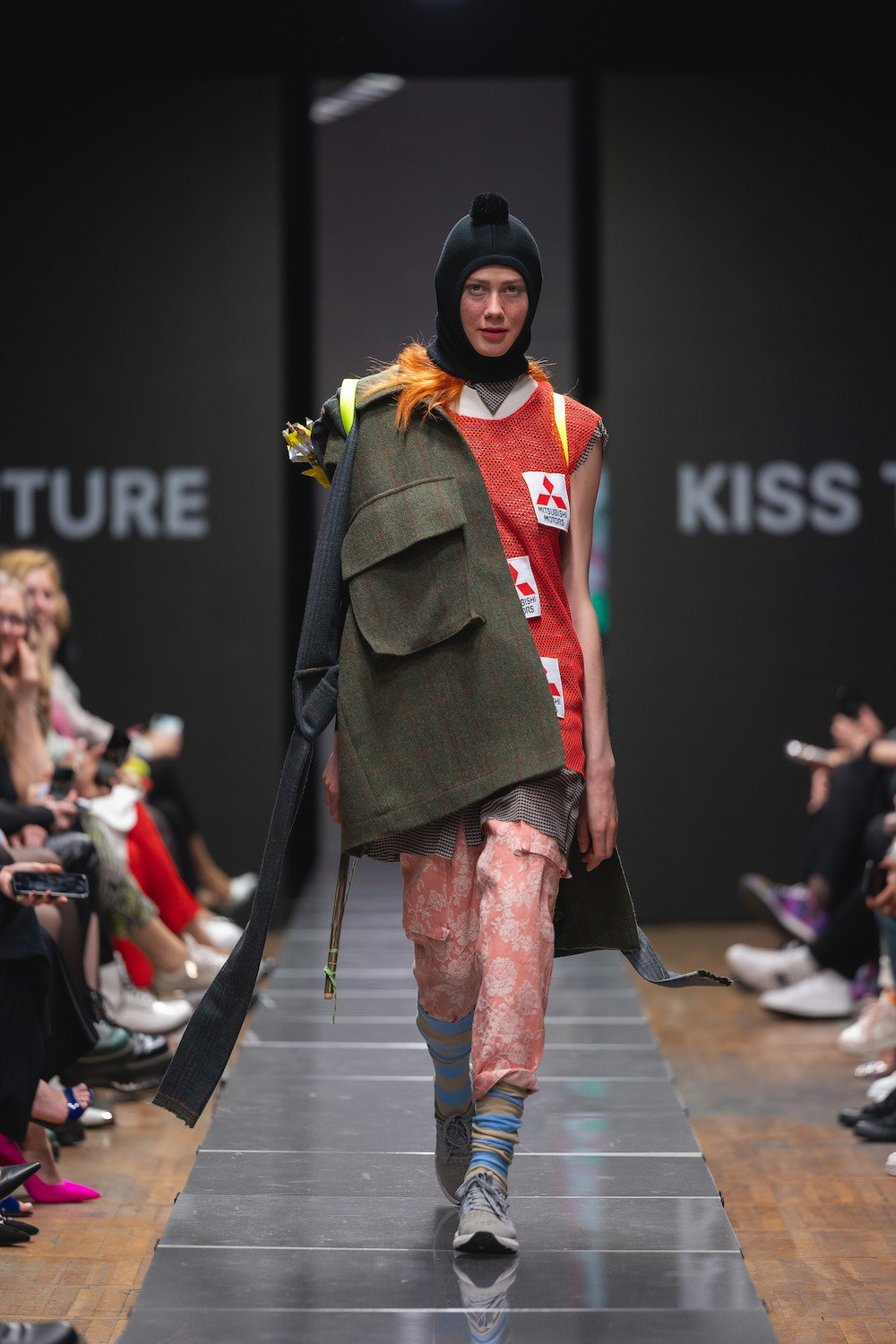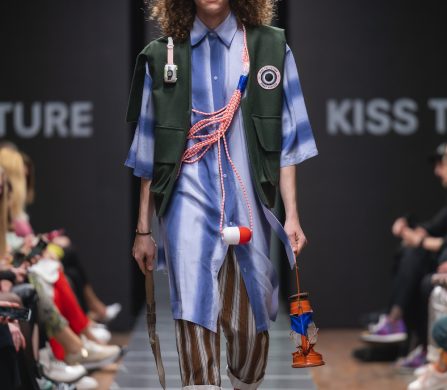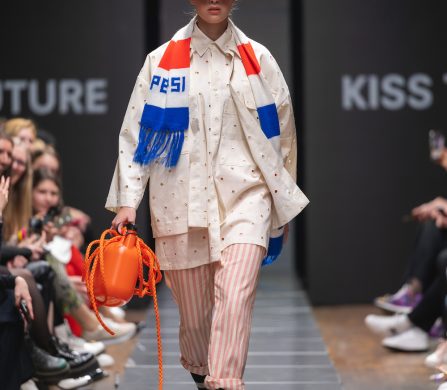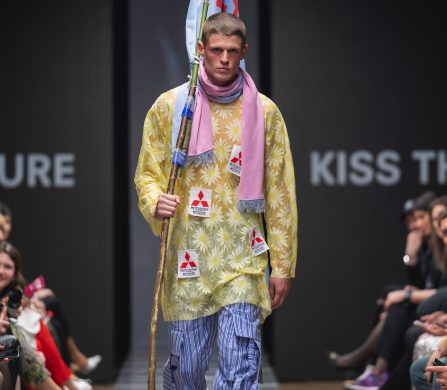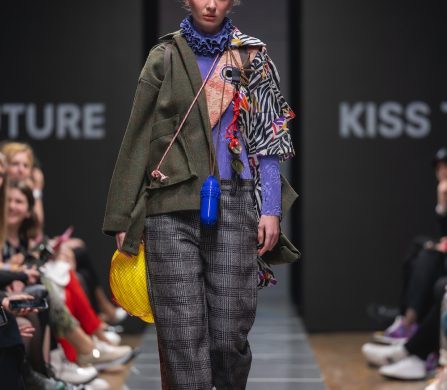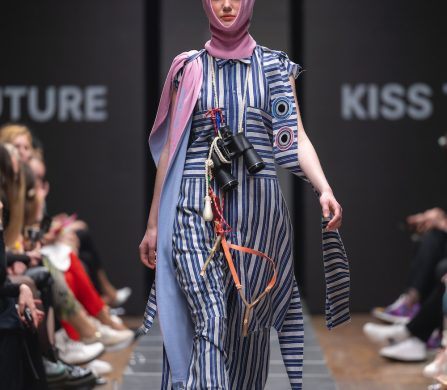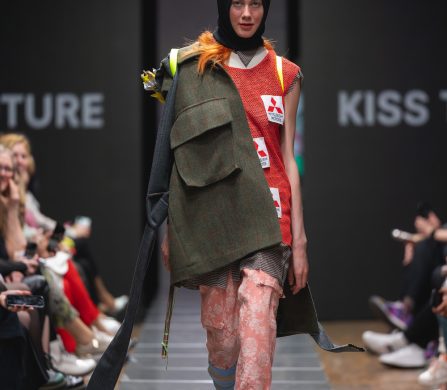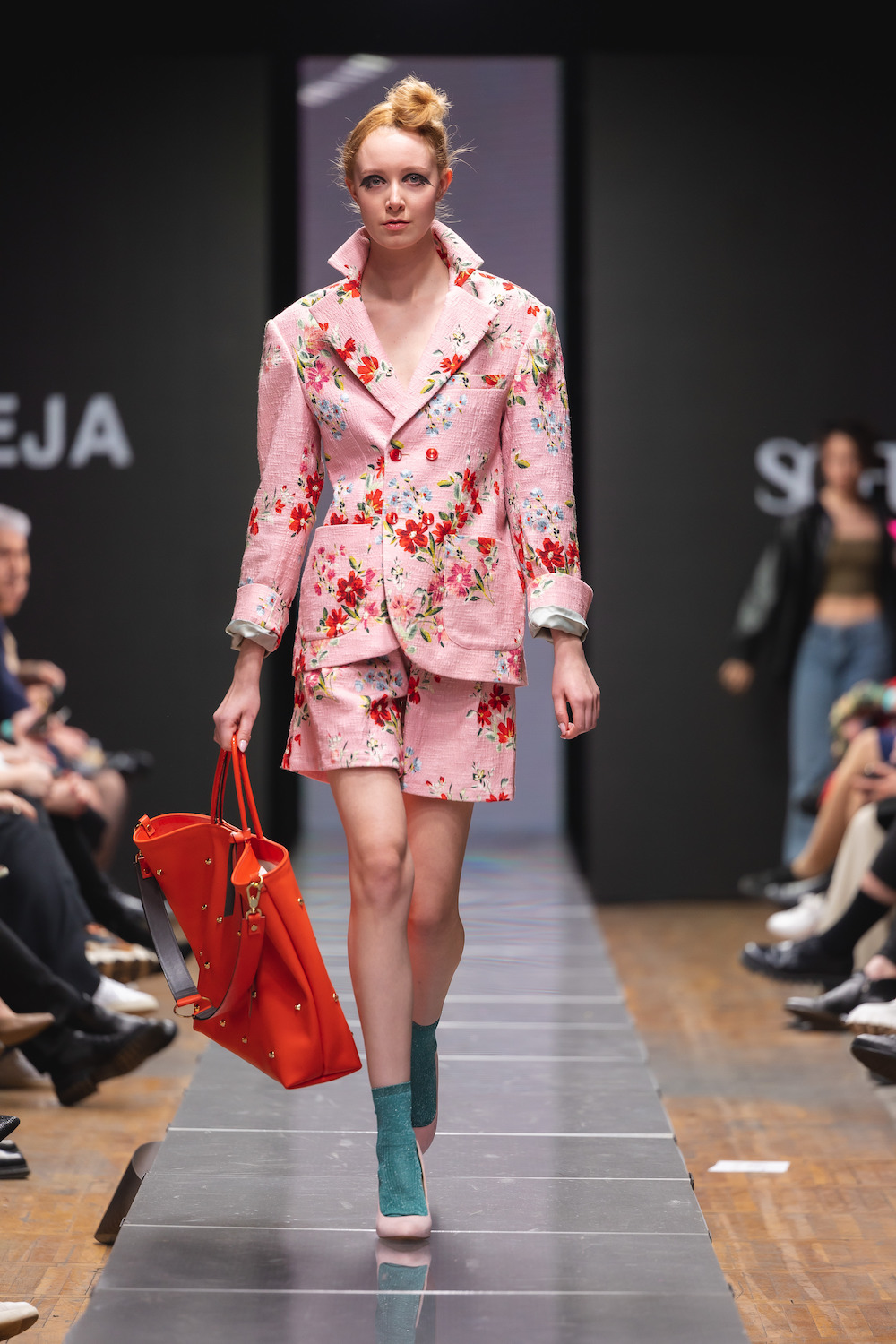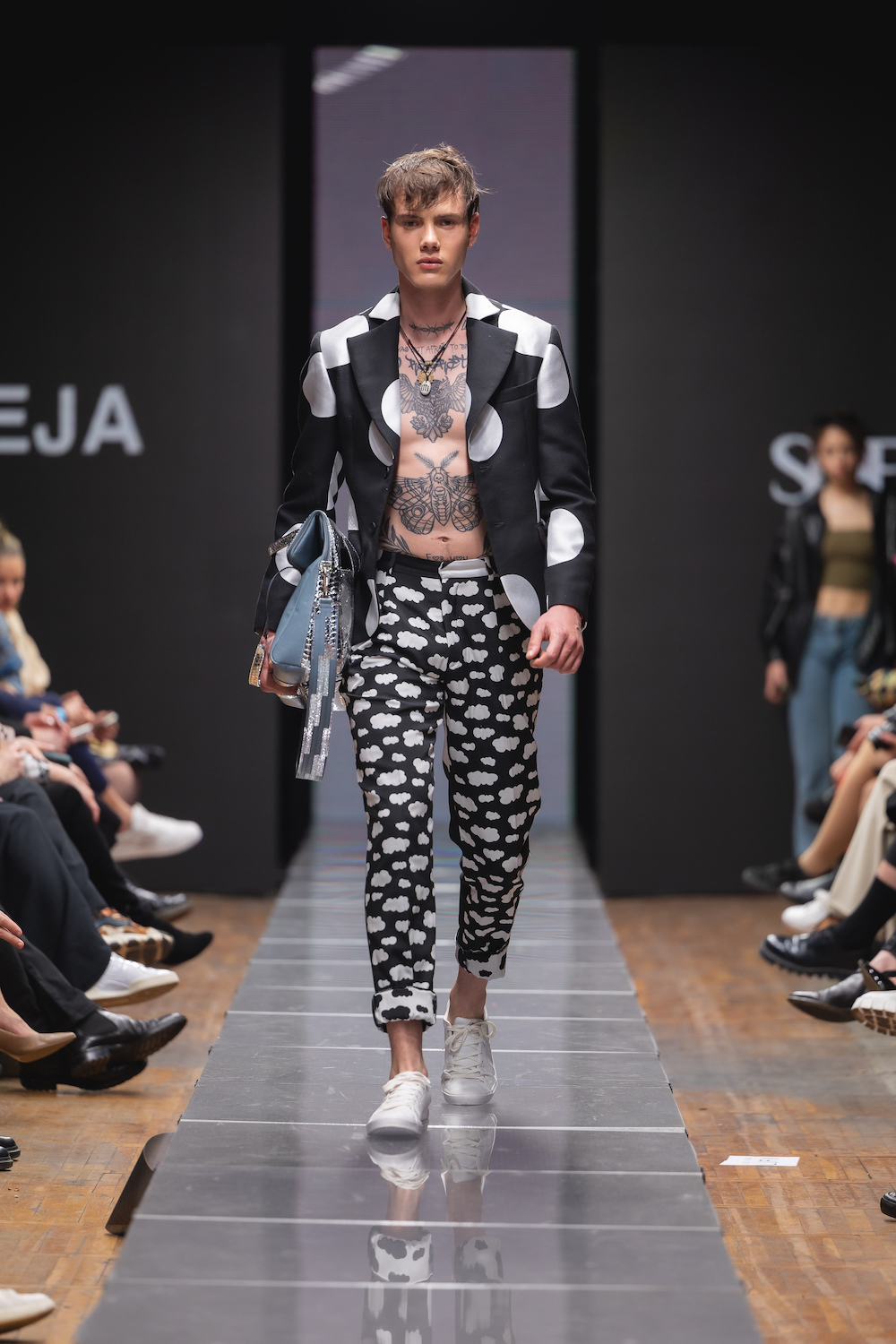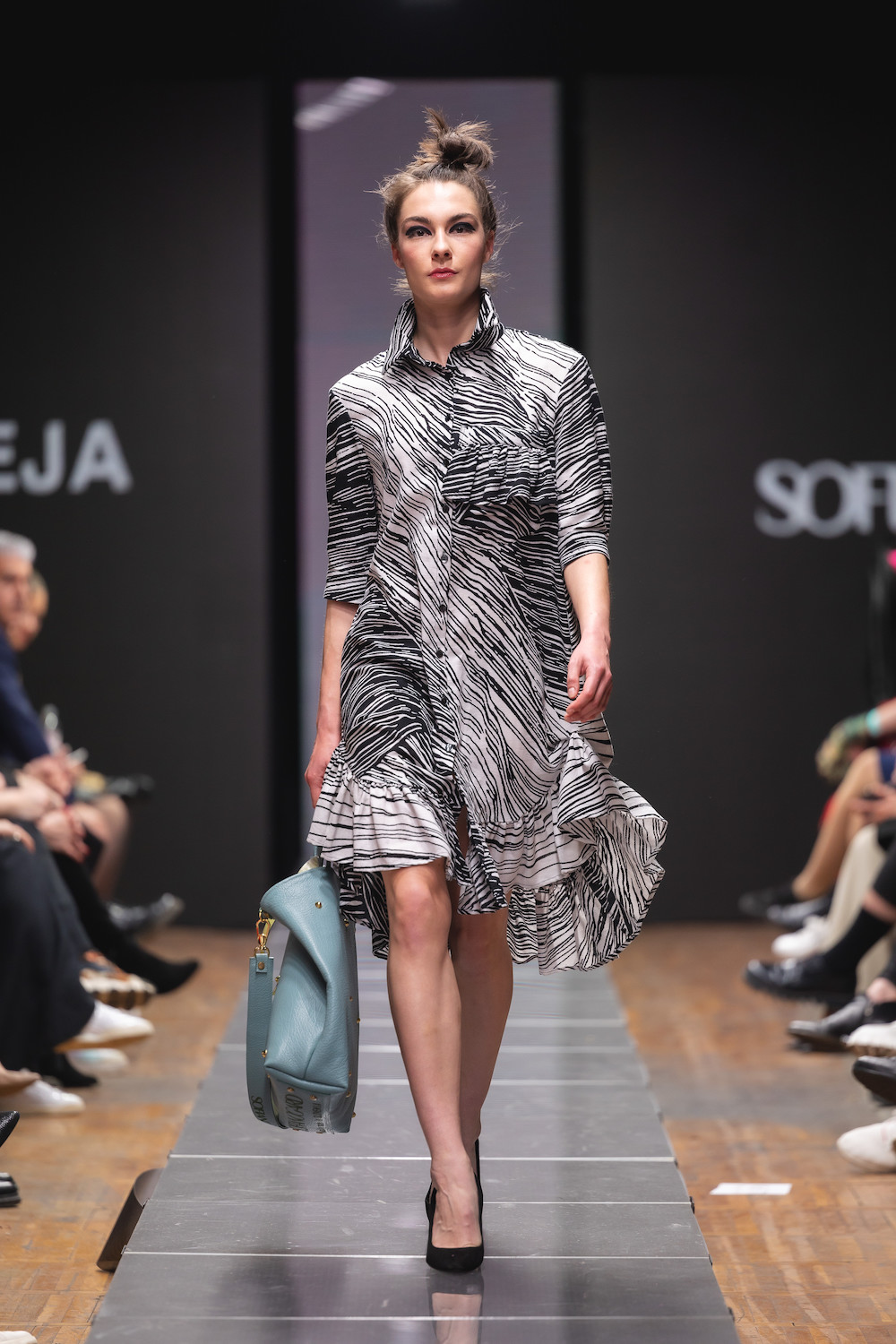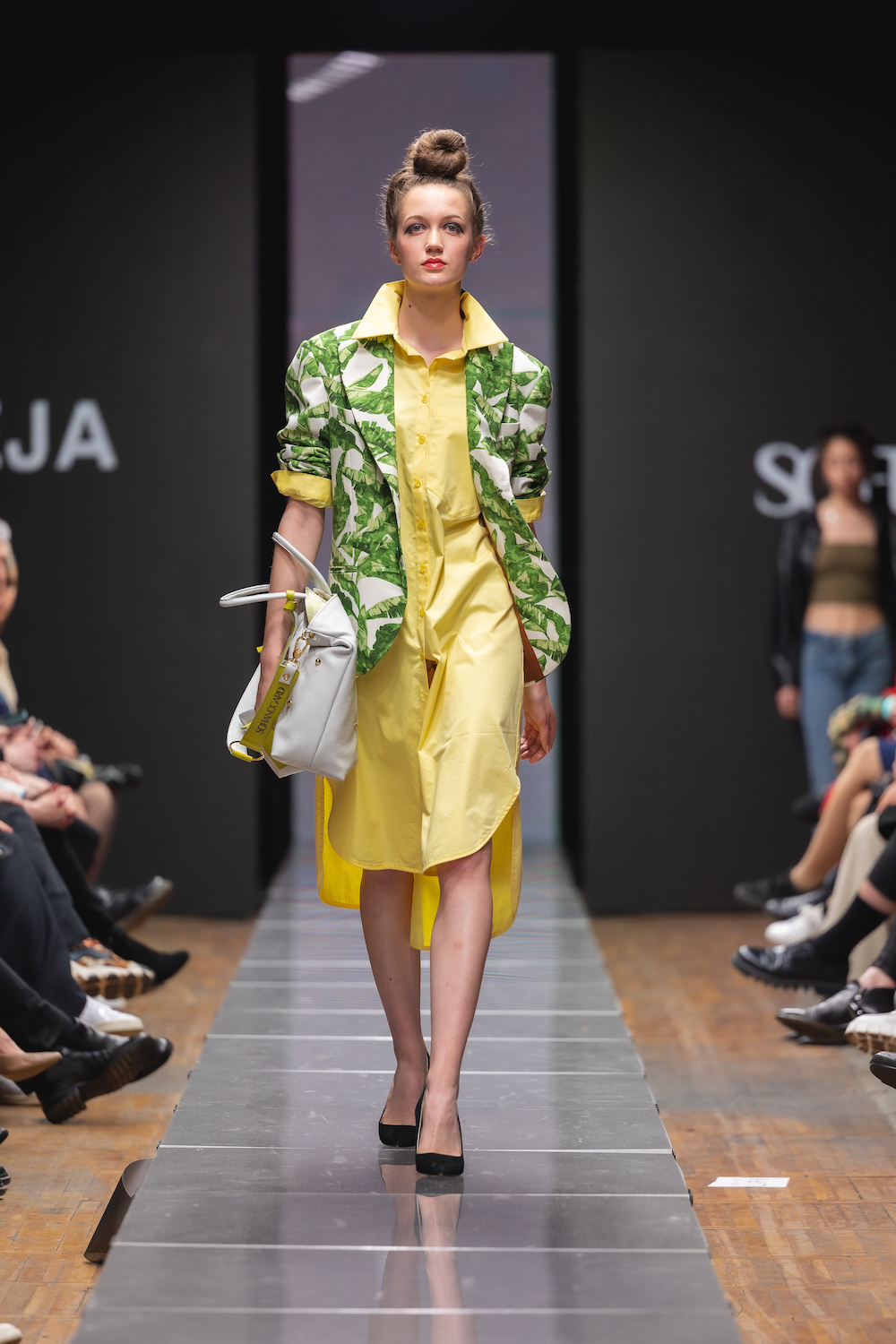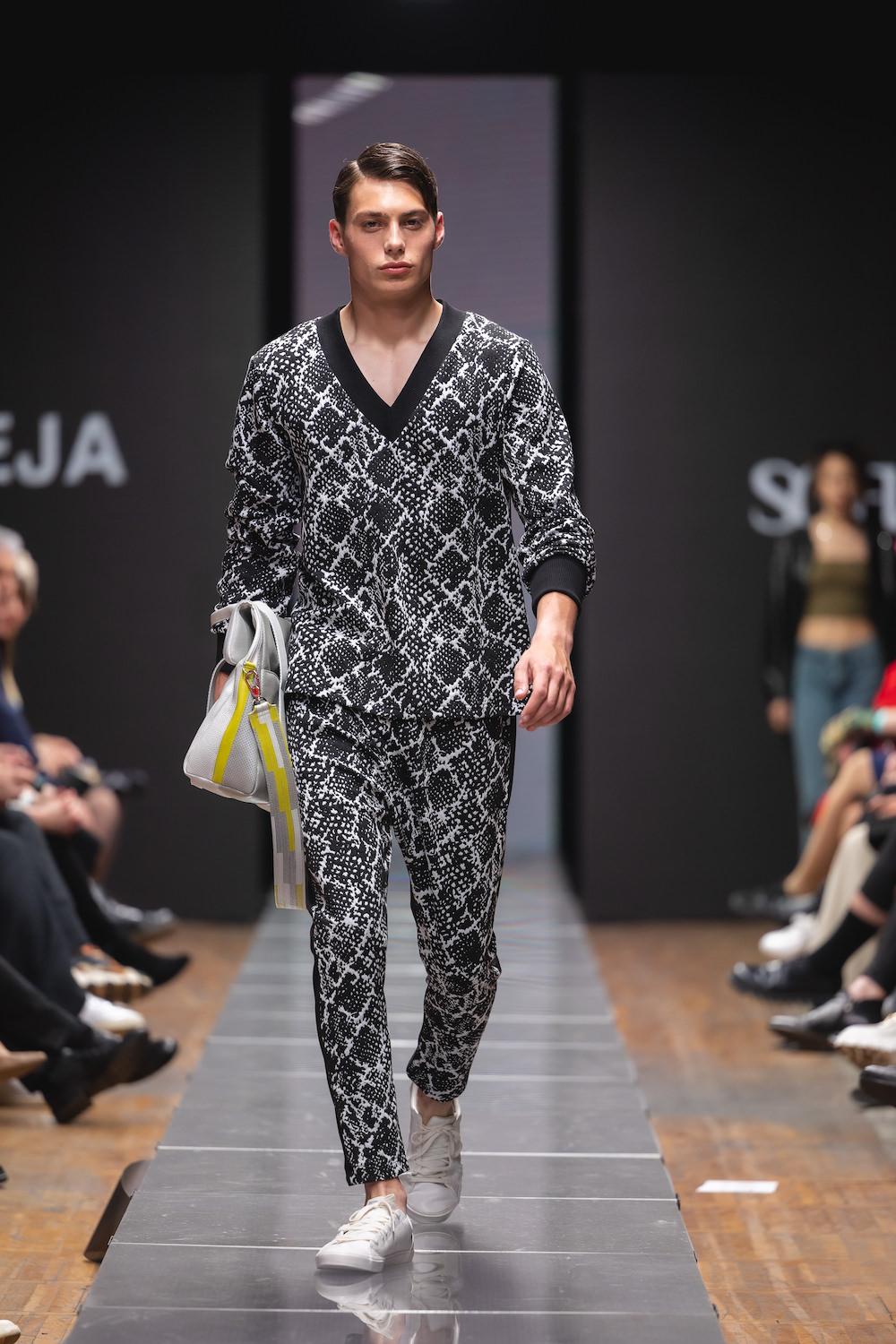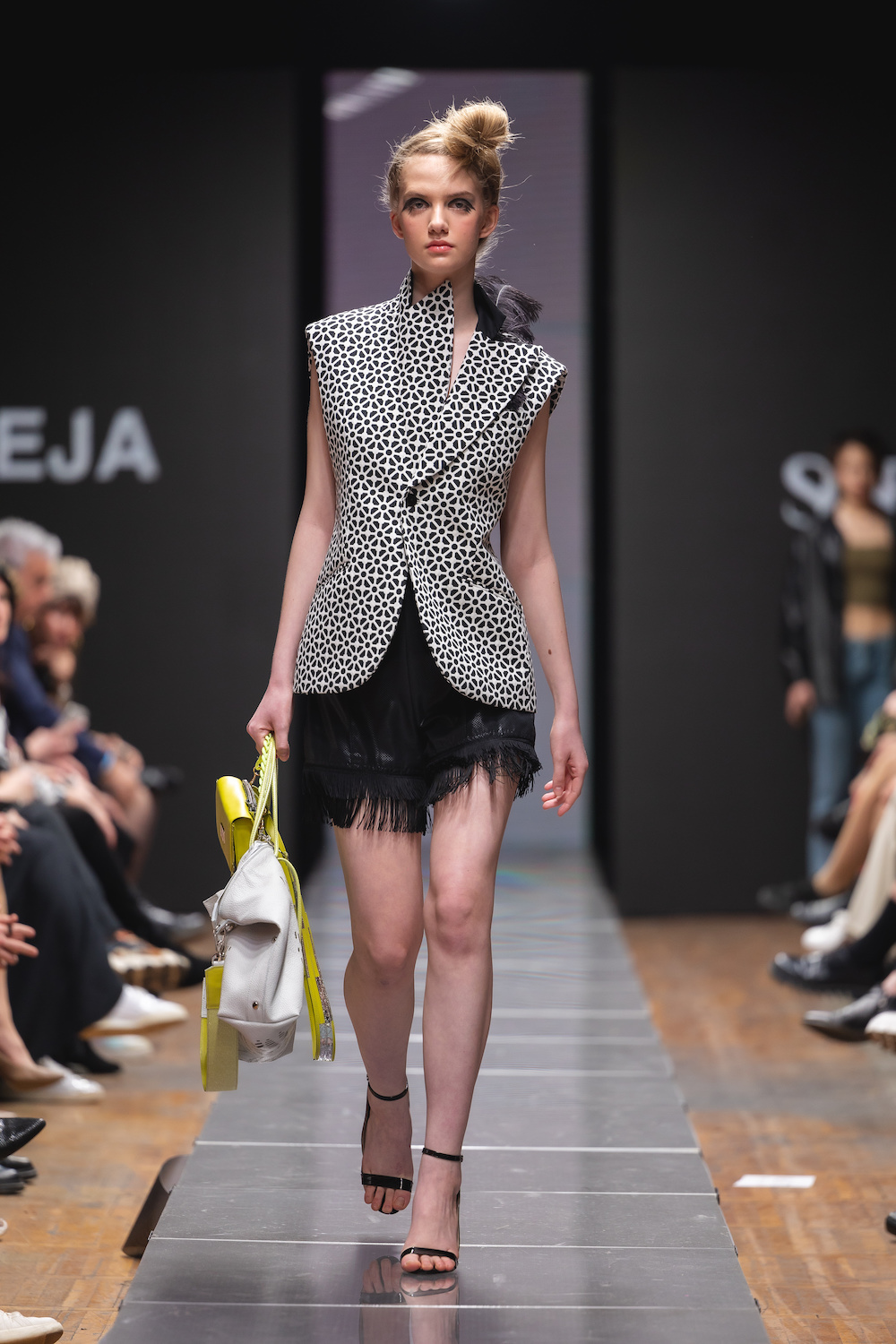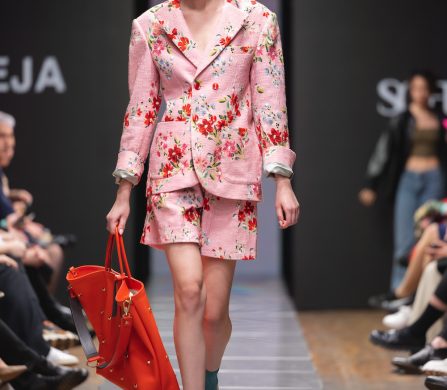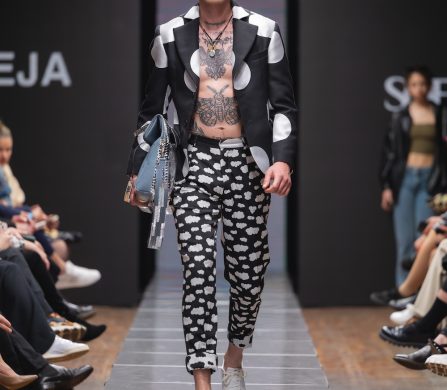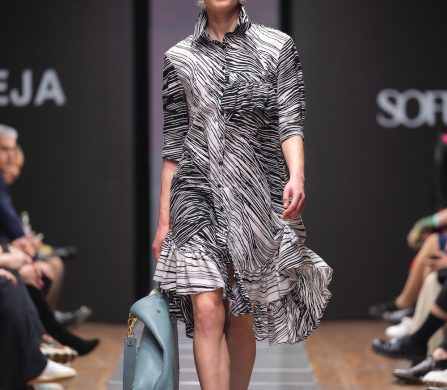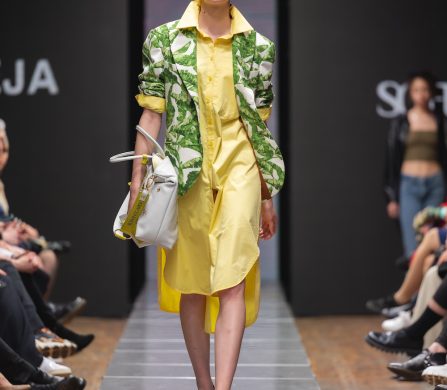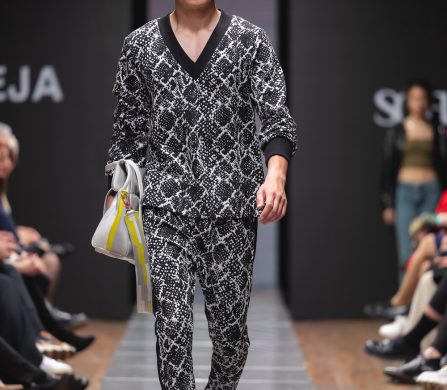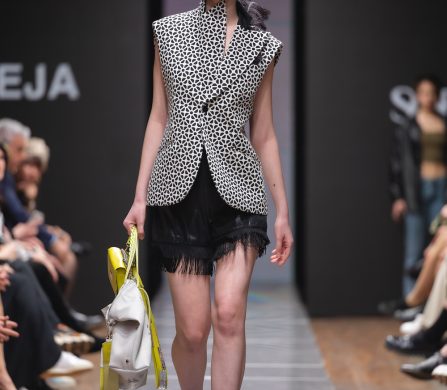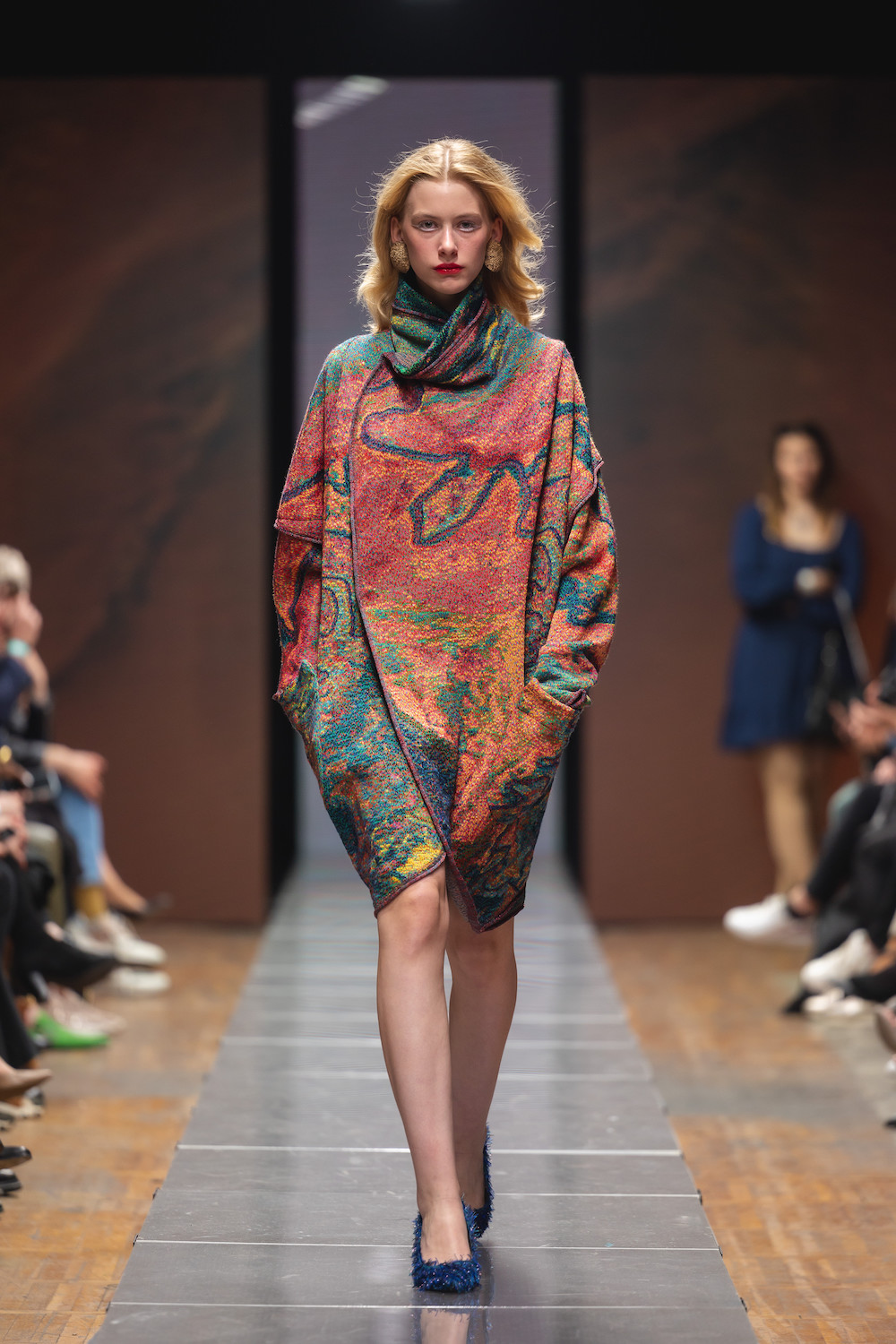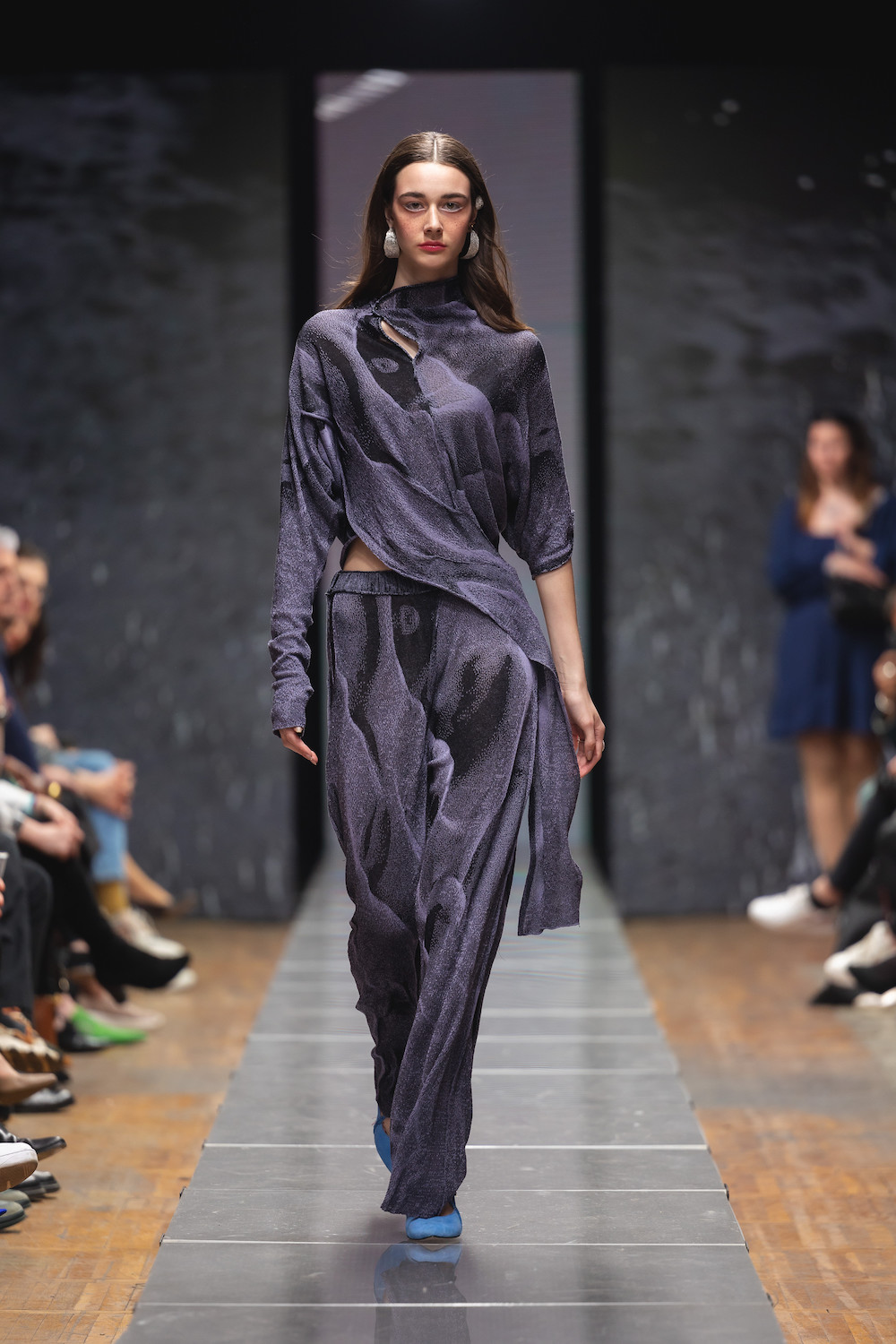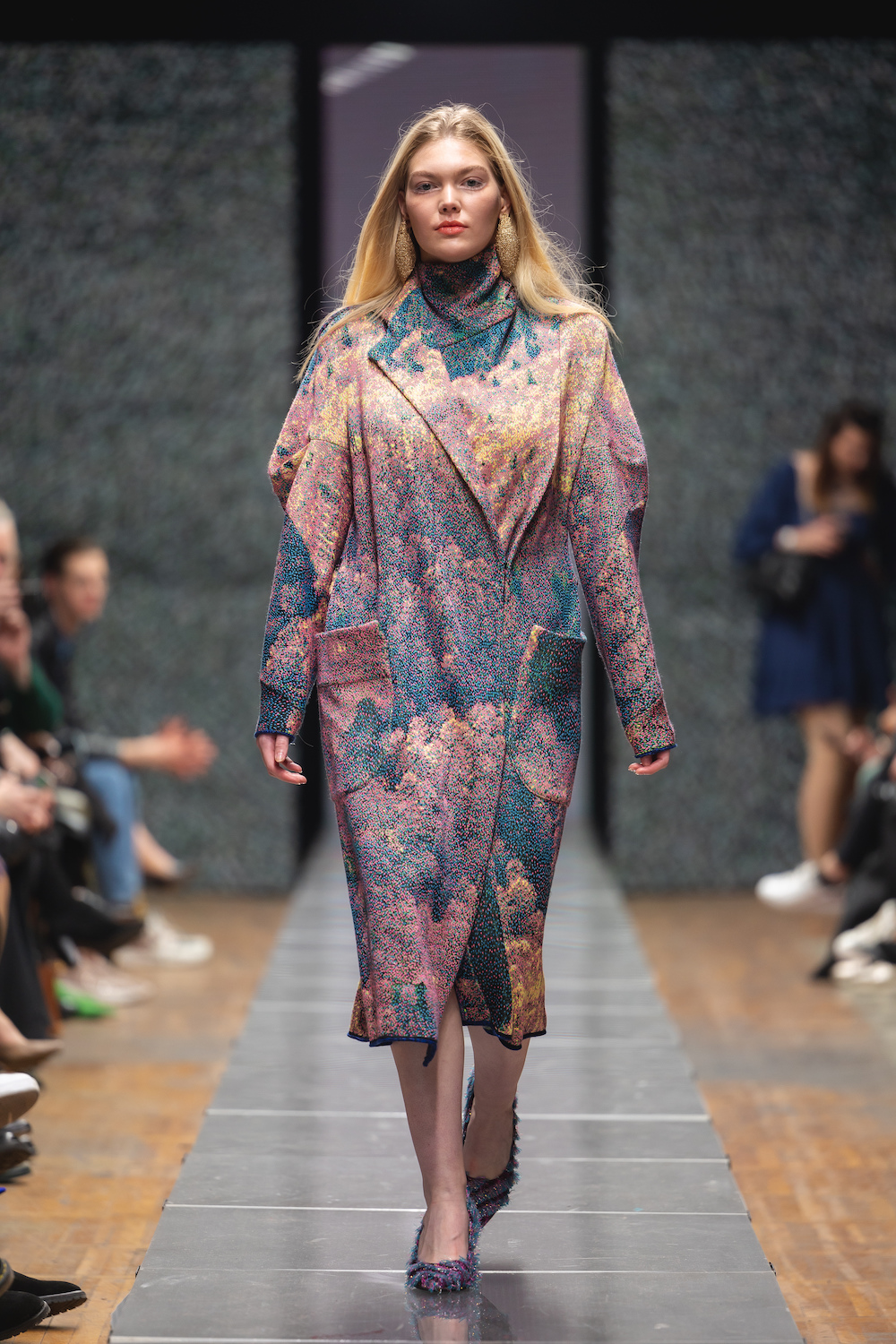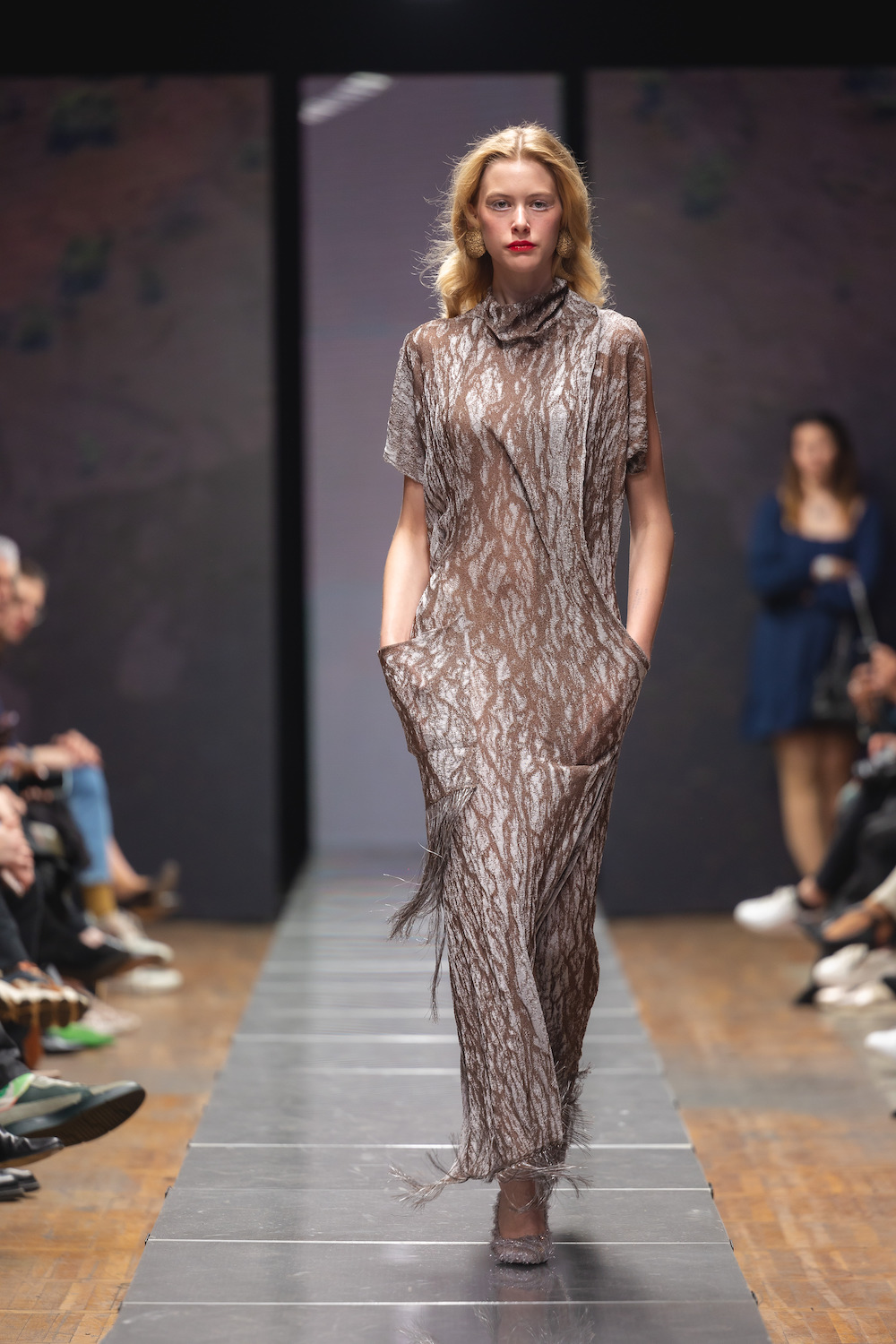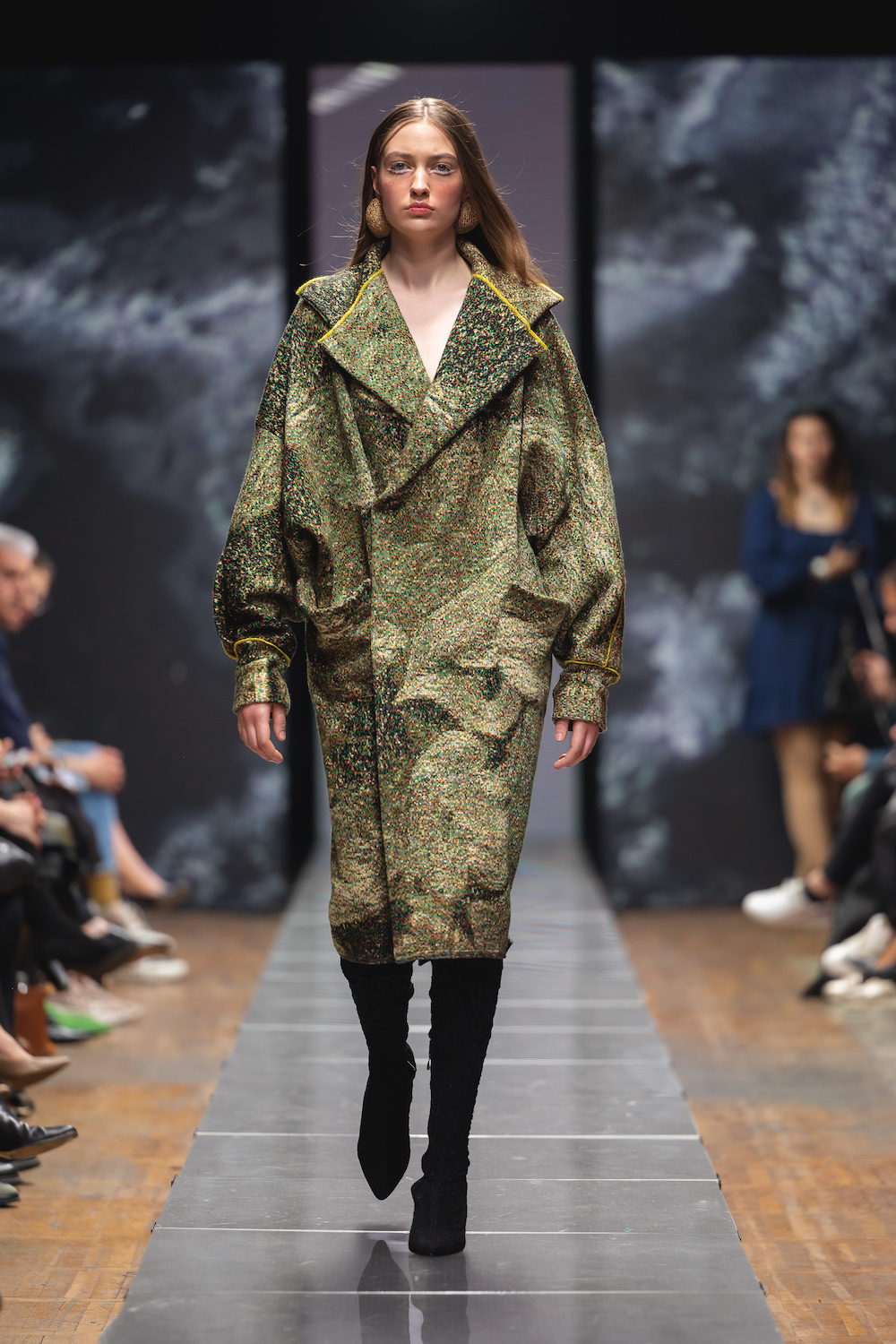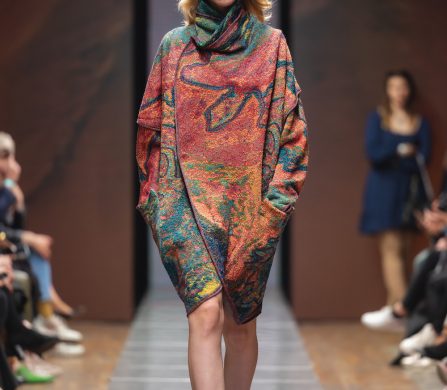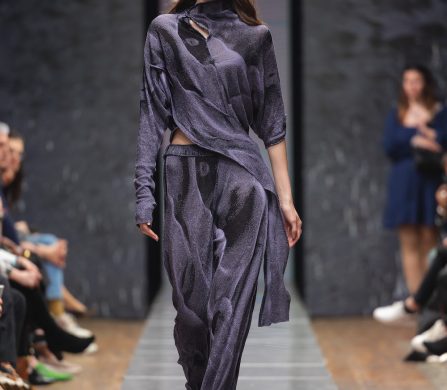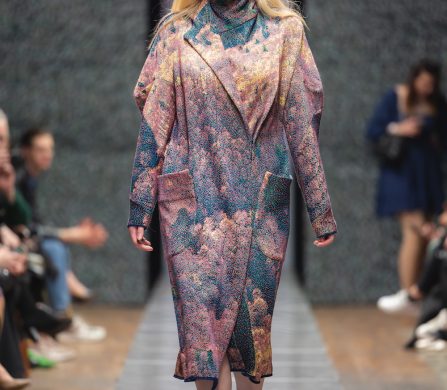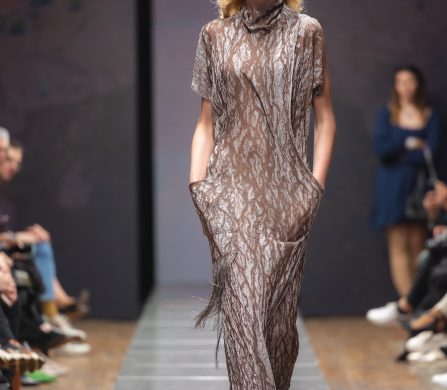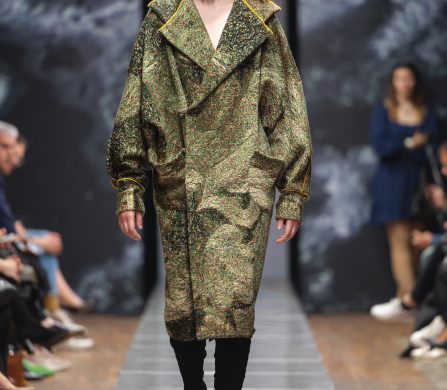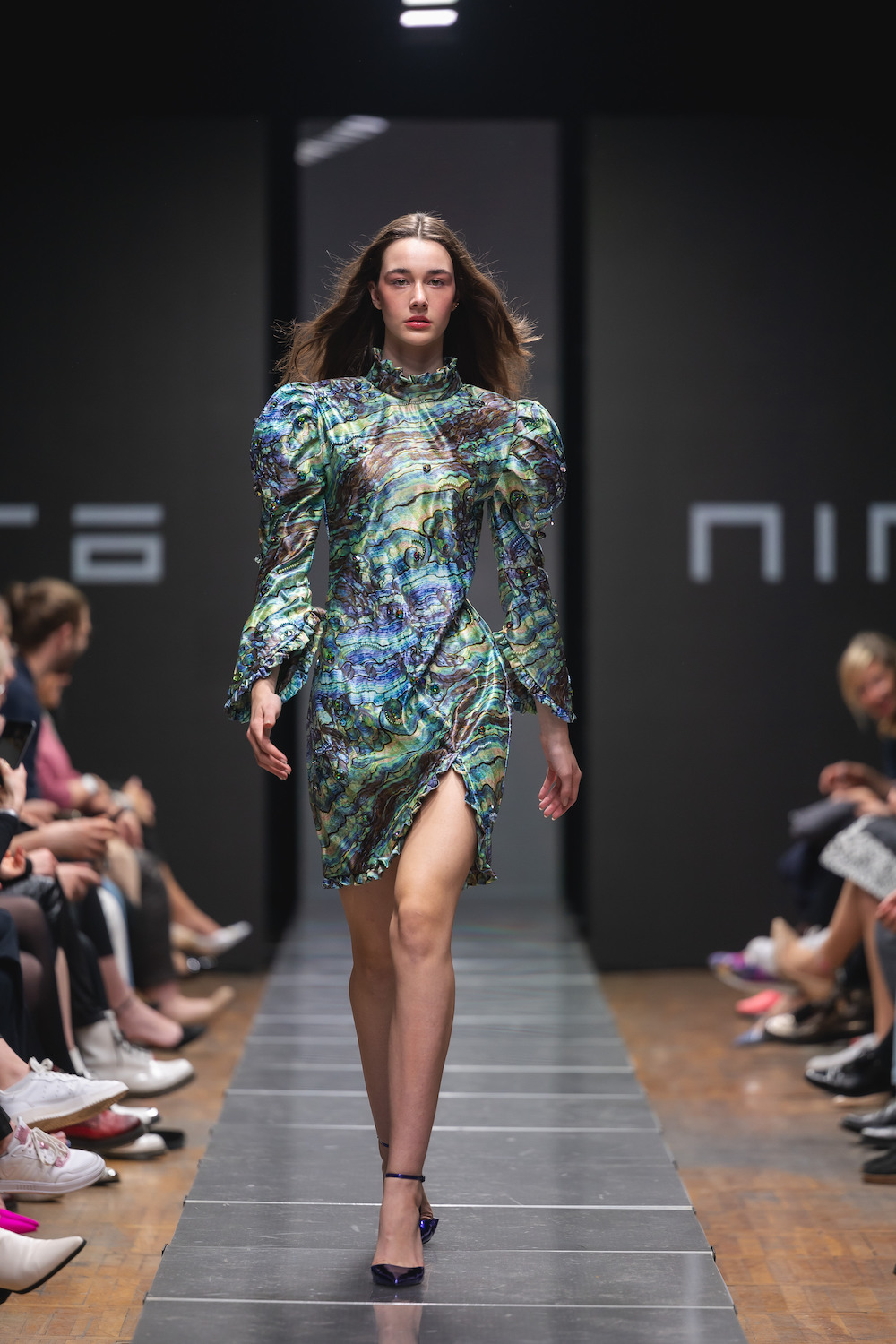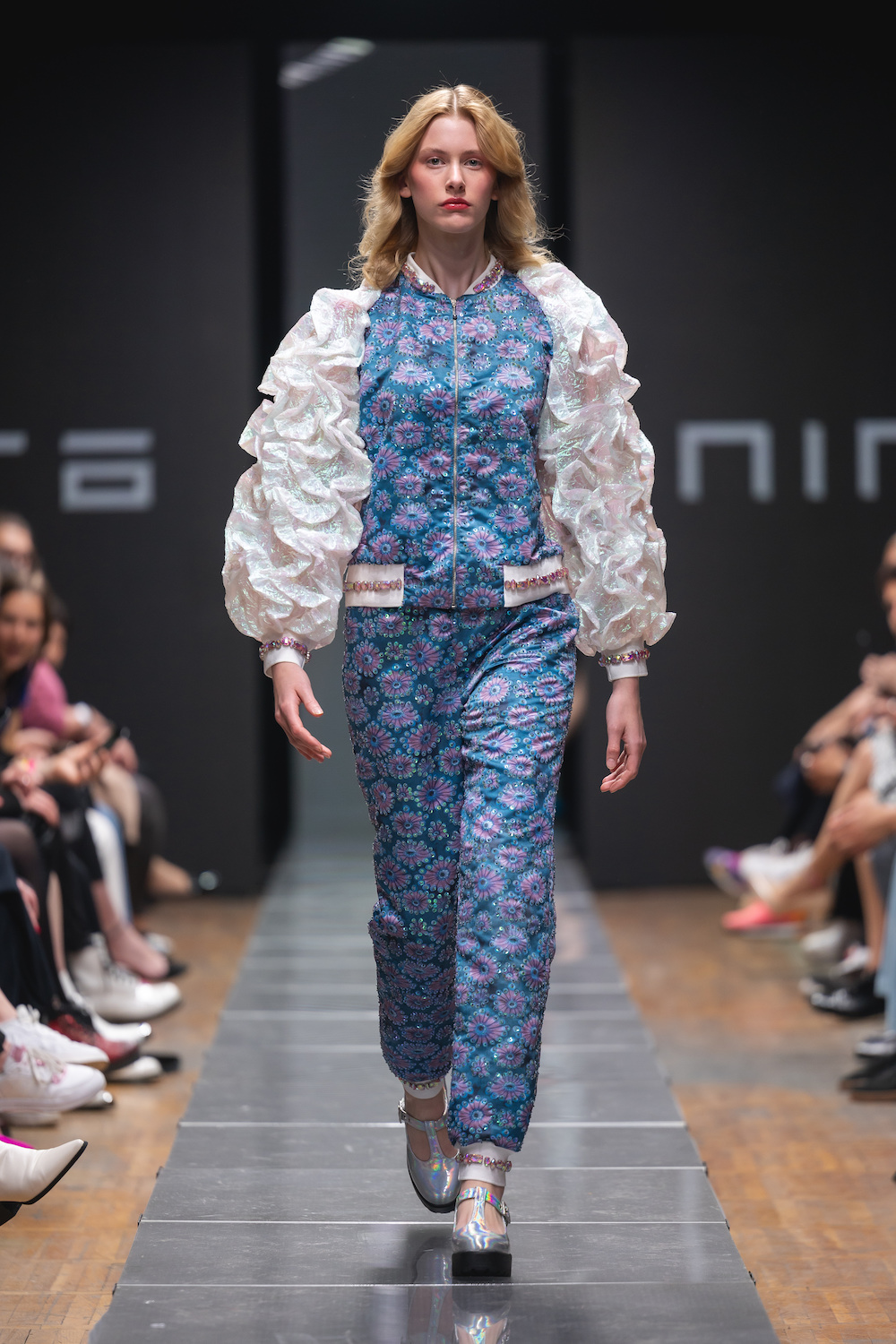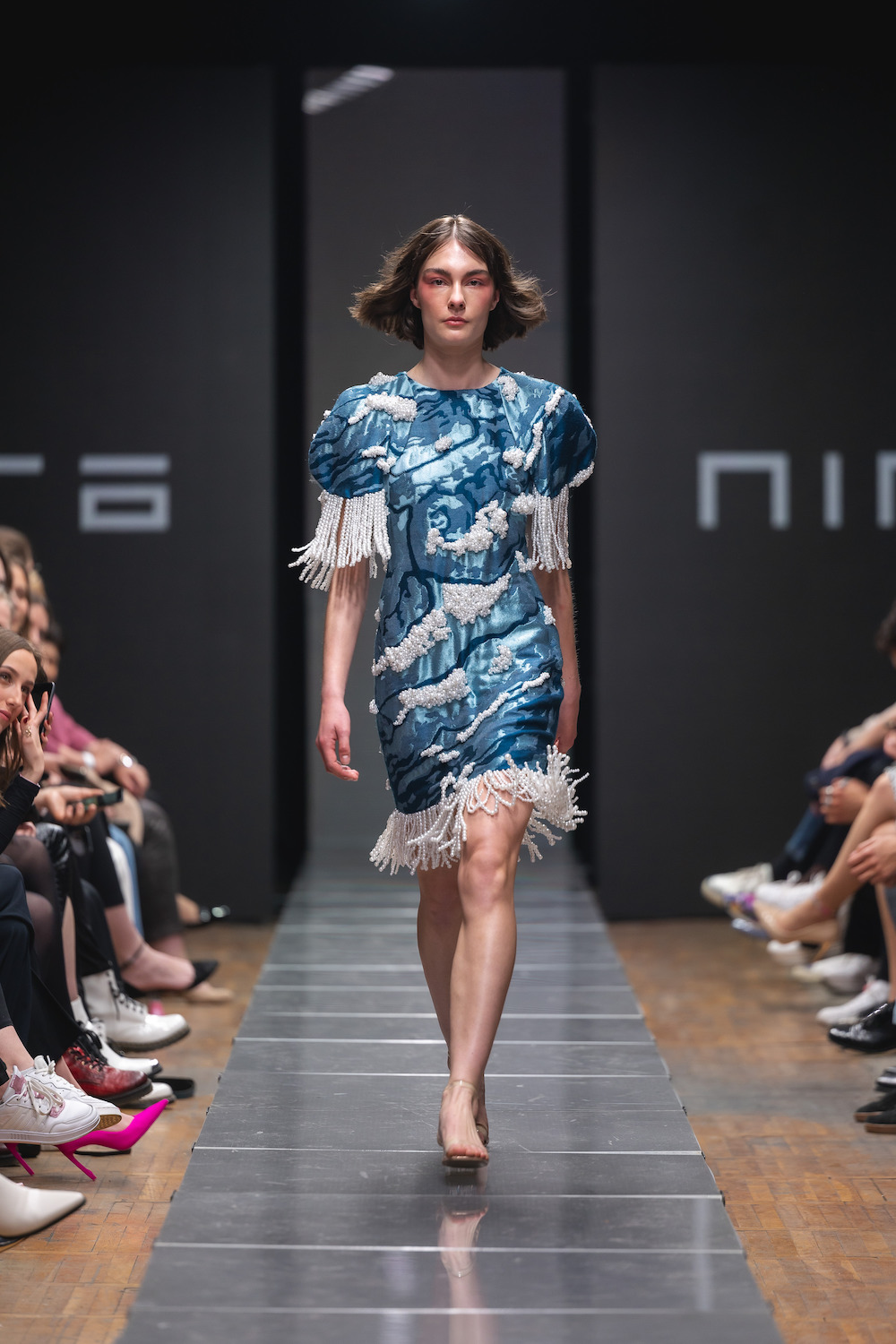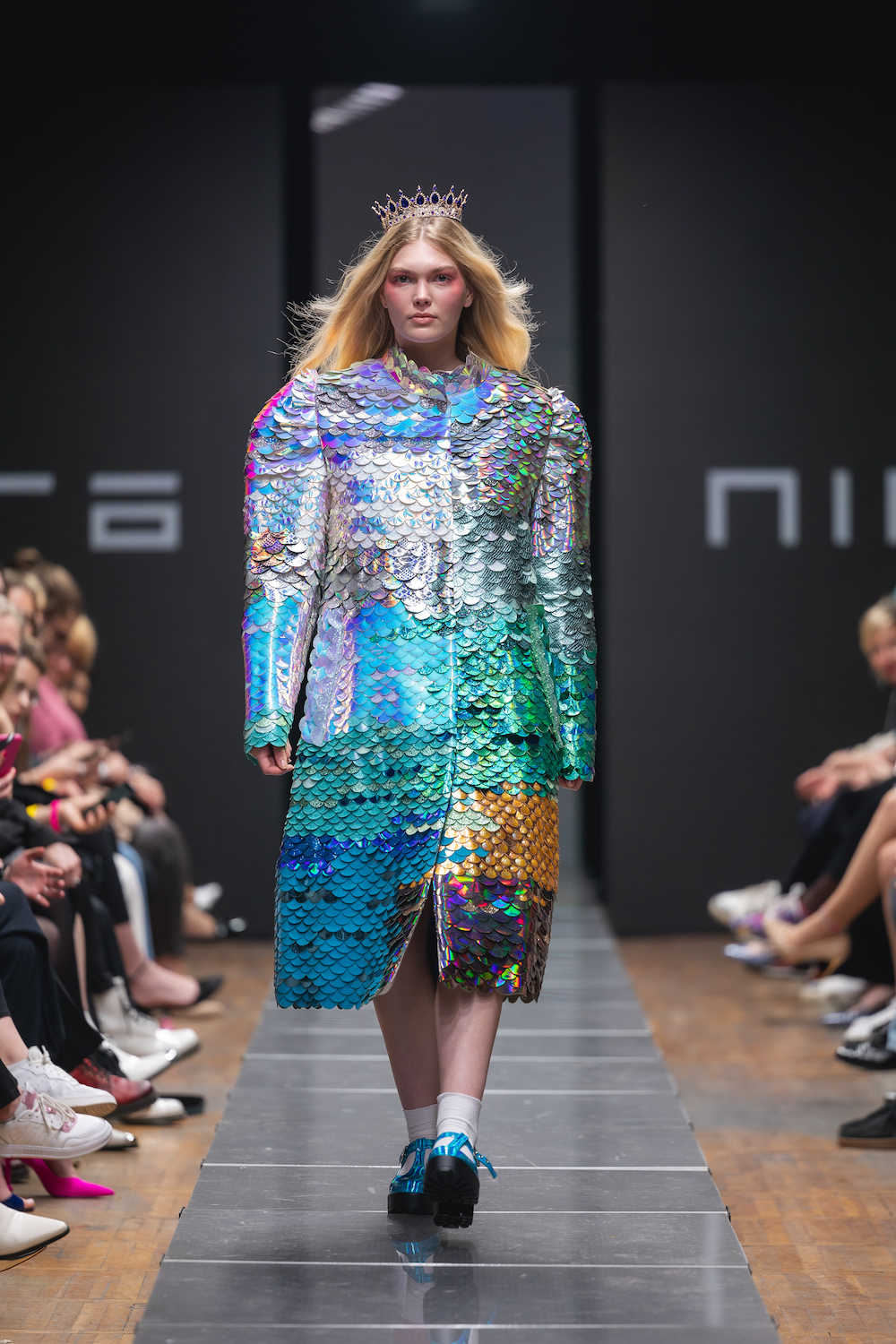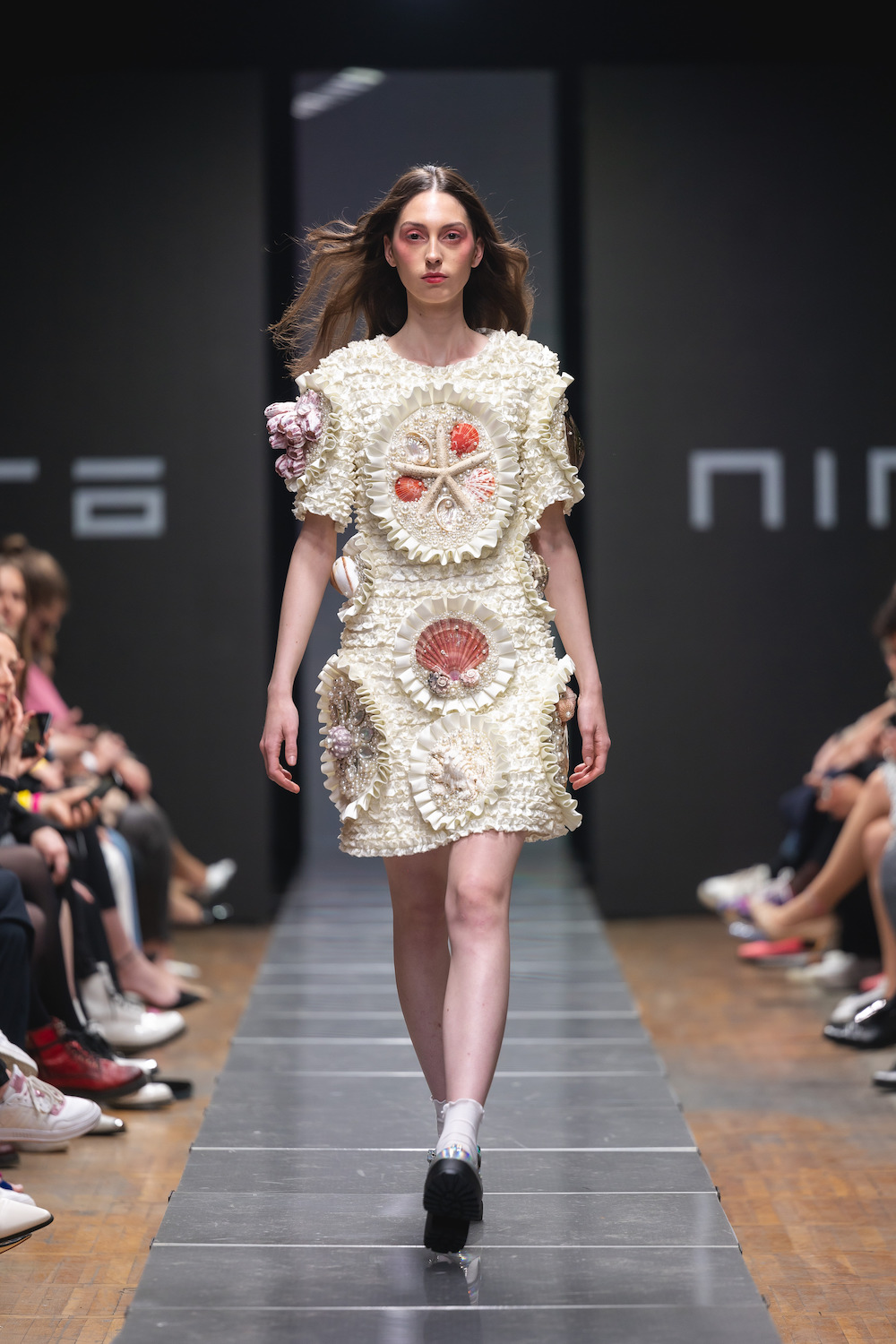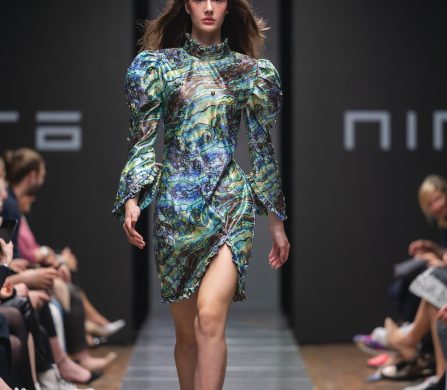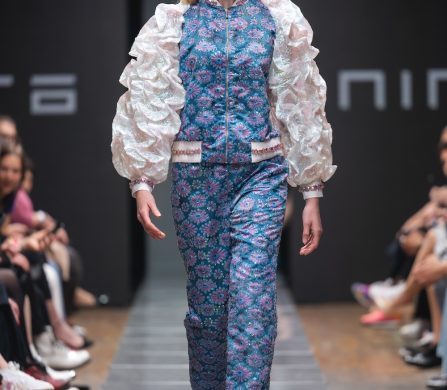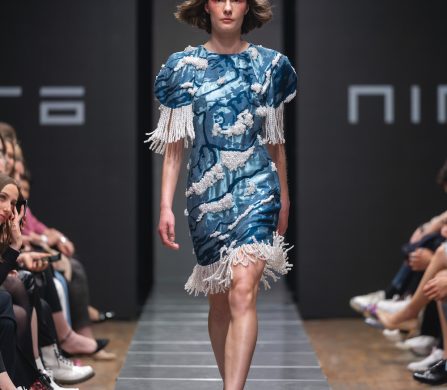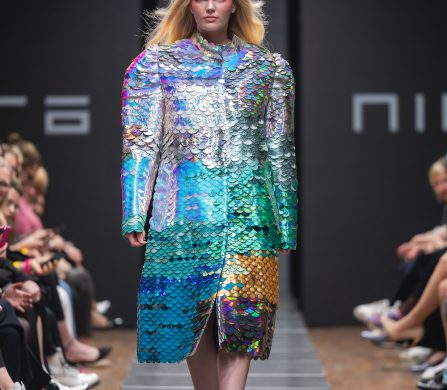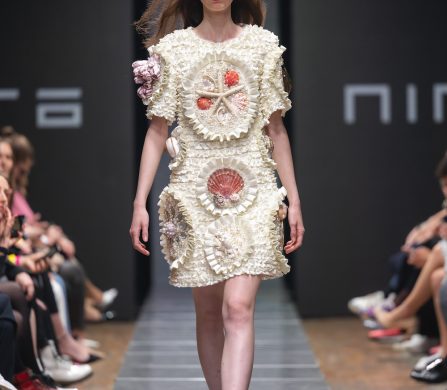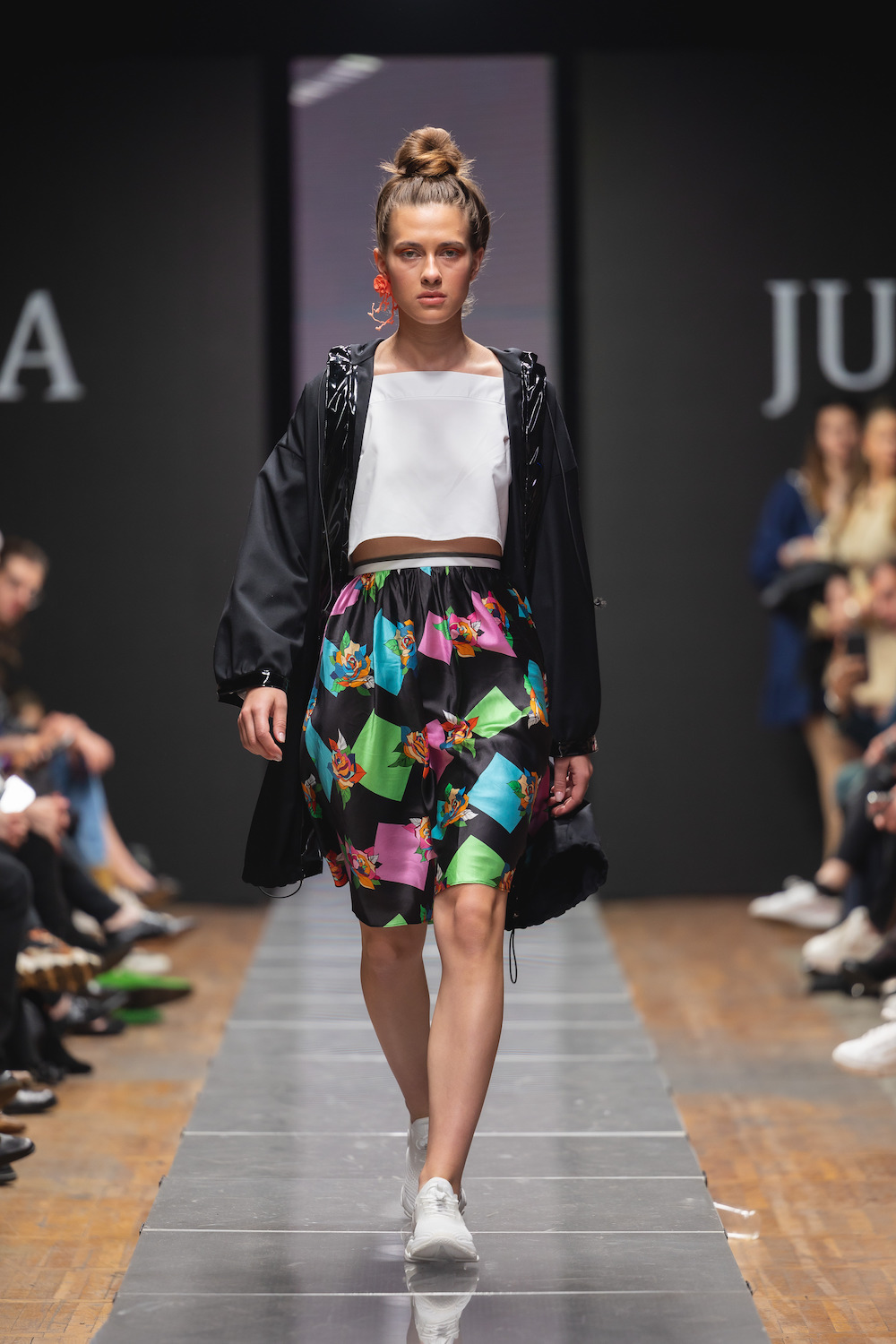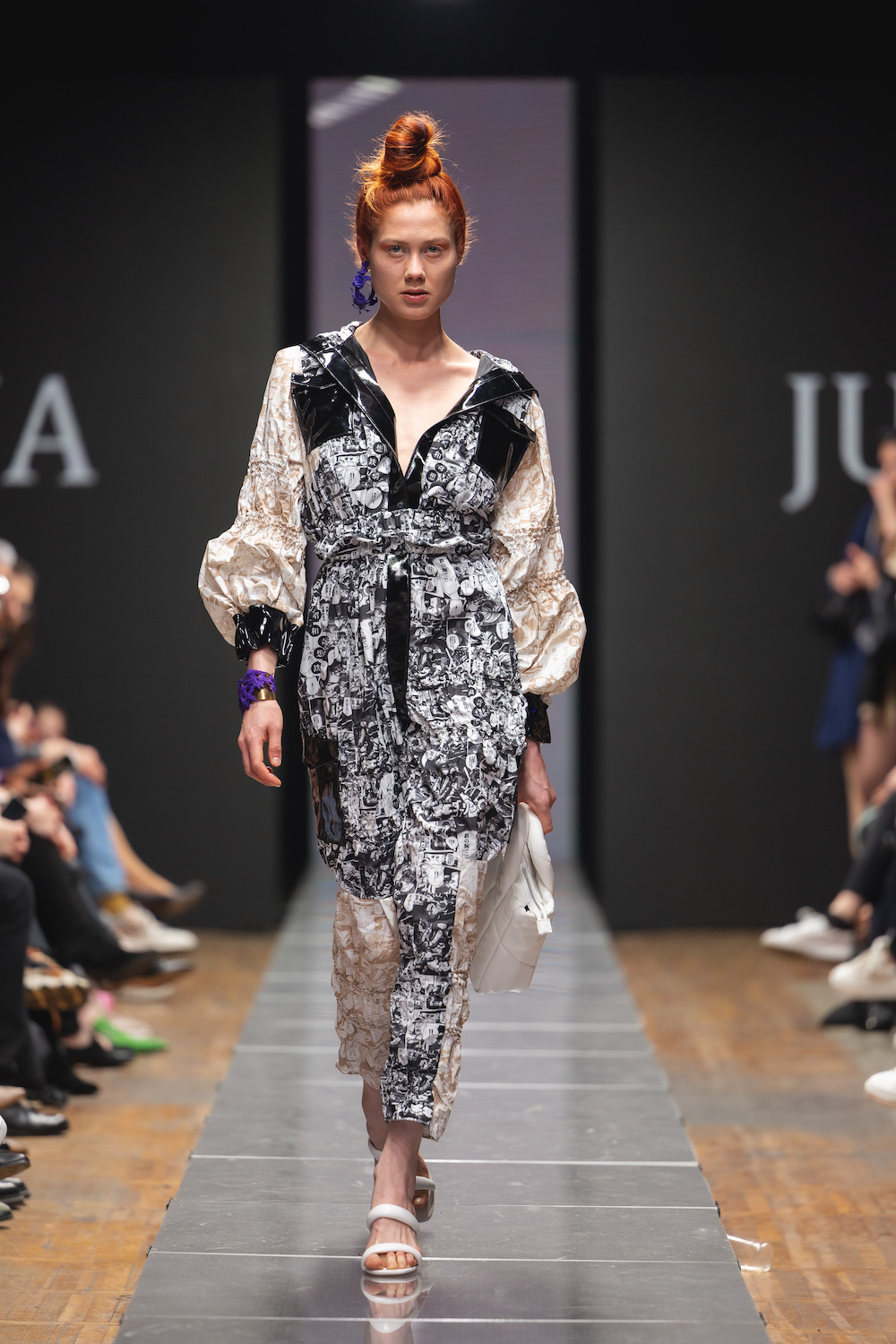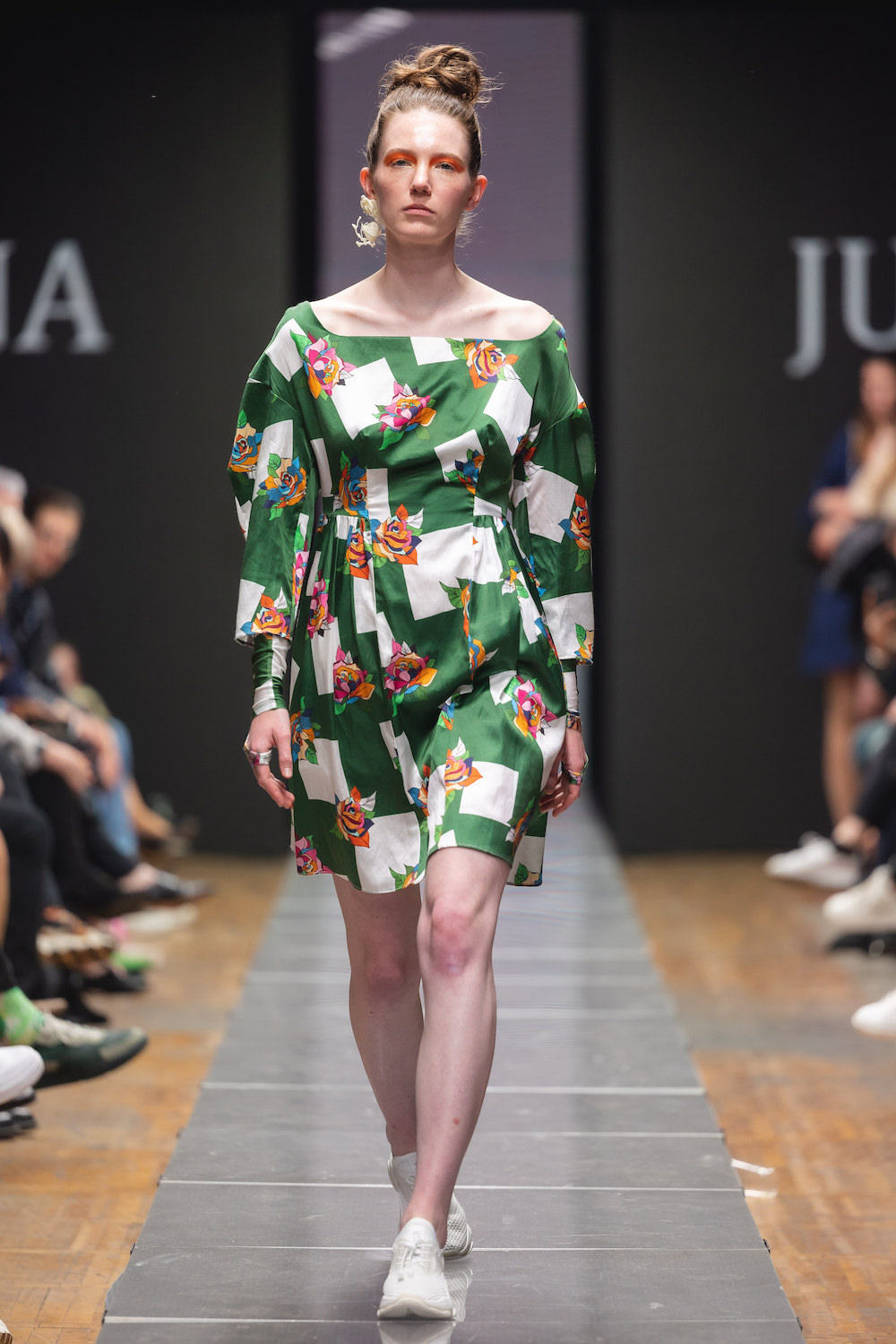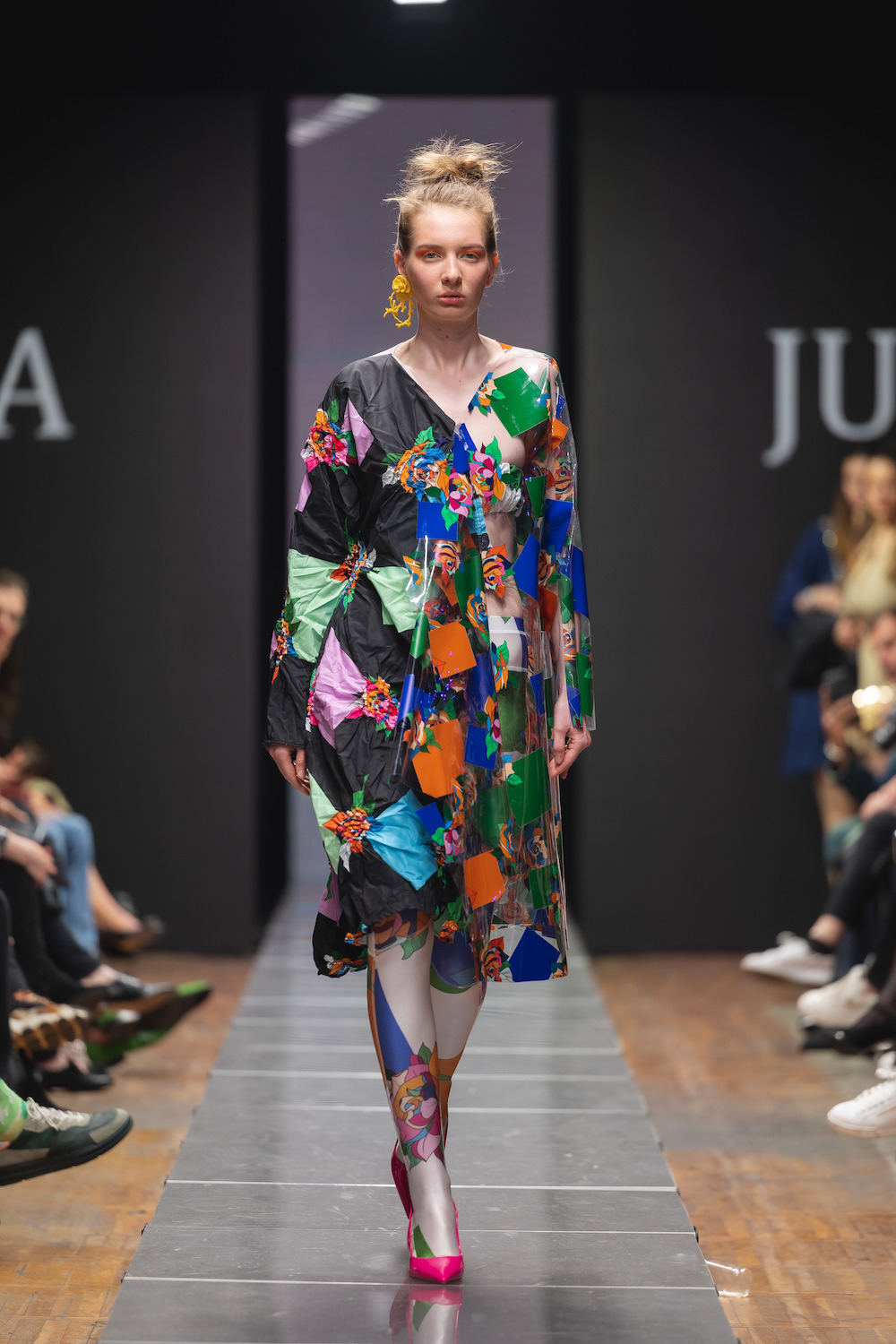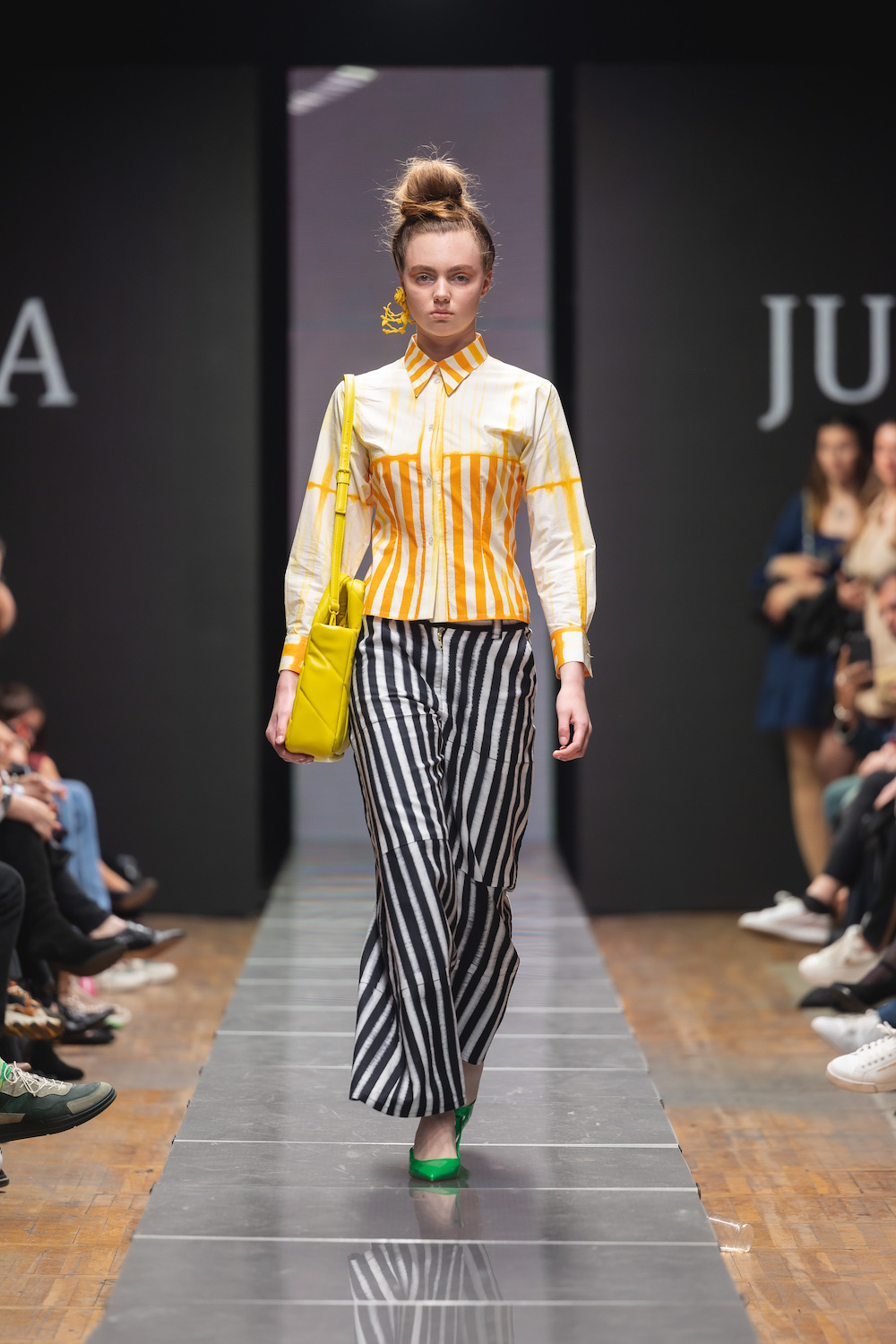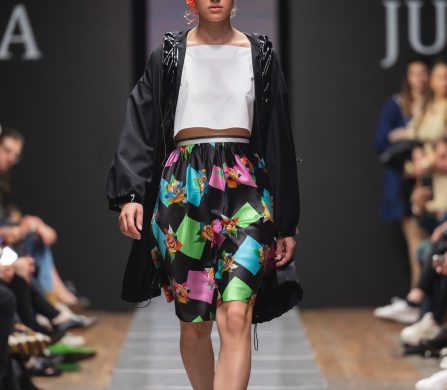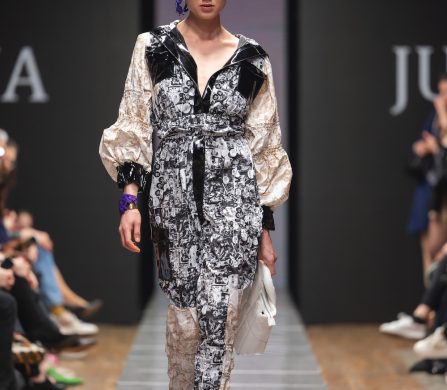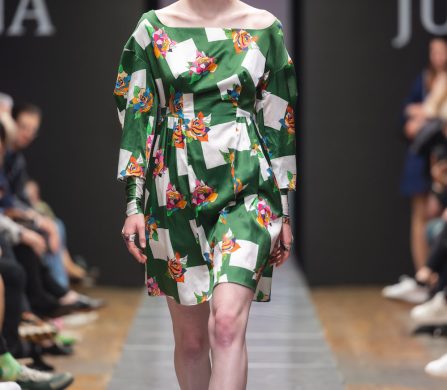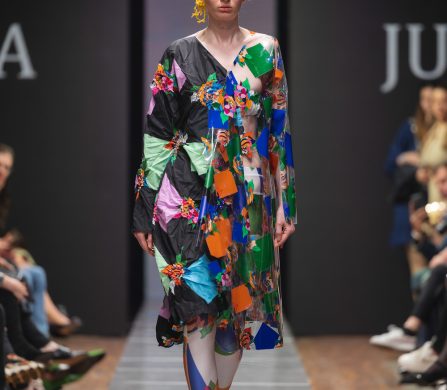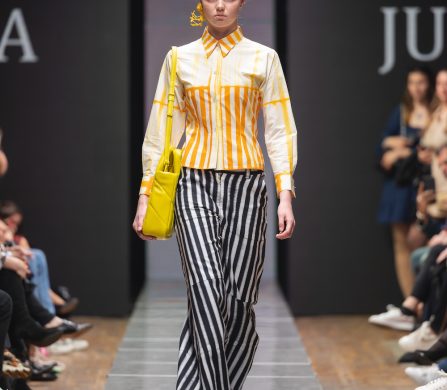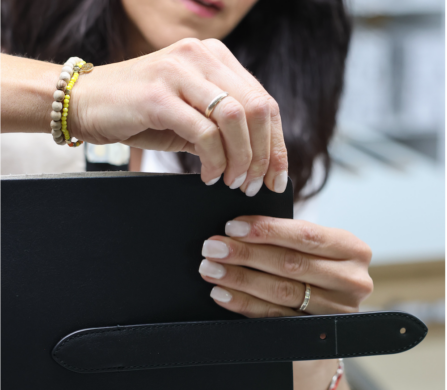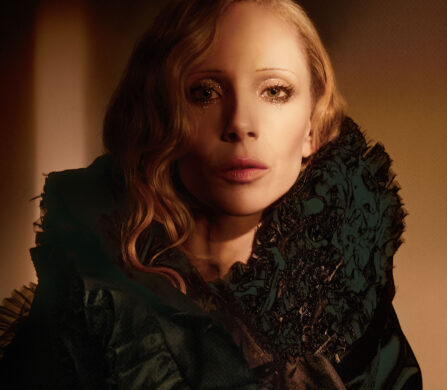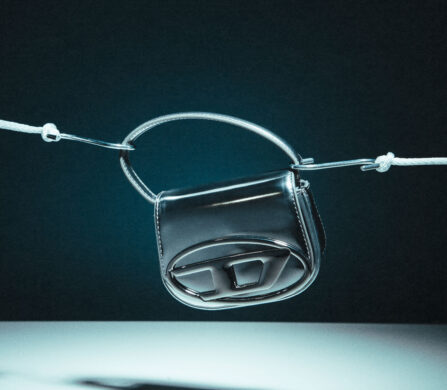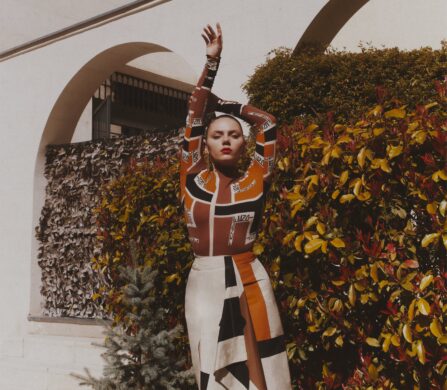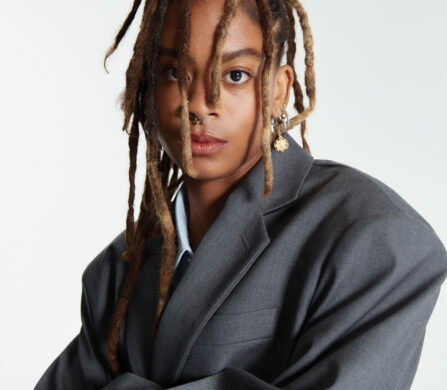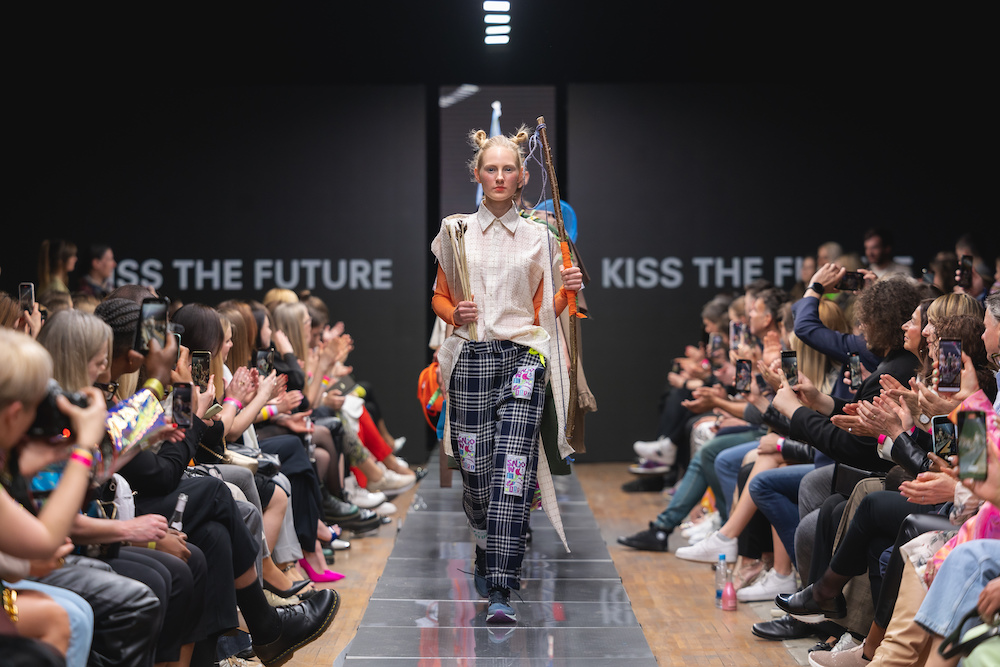
Kiss the Future. Photography | Ziga Intihar
Ljubljana may be one of the smallest capital cities in Europe, but its fashion week, which is run independently by creative group Zvereene Institute, supports a multitude of designers, both local and international. The 13th edition, which took place this month, included around 30 catwalk shows, as well as talks and events and a pop-up showroom where designers could mingle with press and buyers.
The city itself has a reputation for being environmentally conscious, having been awarded the title of European Green Capital in 2016, amongst a host of other accolades for sustainability. It’s no surprise then that its fashion creatives are similarly focused on reducing environmental impact. Pieces are often one off or limited edition and produced from handmade or recycled and repurposed materials. One of the results of this is an array of distinctive fabrics and prints which you are unlikely to see elsewhere.
With their brand Made in Anselma, designers Ana Malalan and Tanja Pađan aim to create gender-neutral, timeless clothing and work exclusively with vintage materials, meaning each garment is unique. They describe their latest collection, BUUUM, as an “explosion of colours, intertwined with intense tones and [a] nostalgia for youth”. Stripes, checks, florals, paisley, cartoonish graphics and snake print were layered or patchworked together, and teamed with solid pieces in all the hues of the rainbow, with a surprisingly cohesive result.
JKH Identity produces both women’s clothing and unisex accessories, heavily influenced by Slovenian cultural heritage, symbols, textiles and mythology. The designer Julia Kaja Hrovat gives these a modern twist by creating her own fabrics. For the PK_022 collection, she drew from Slovenian folk art and the characters and animals that are traditionally painted on beehives. The garments were presented alongside millinery by Ana Cajhen, who sews her creations using a 100-year-old machine.
“Science fiction, urban culture, long novels, space and rococo”, are the diverse influences behind Tanja Pađan’s brand Kiss the Future. The garments in her Remains-Left After collection represent the “Mad Max survival generation, which we will leave behind in the fight for a better tomorrow on our planet”. Models strutted down the runway armed for the apocalypse with bows and arrows, slings, fishing and camping gear and more. Combat trousers in pyjama fabric or delicate floral jacquards and oversized shirts with ombre stripes were paired with more traditional checks in army greens and browns.
Sanija Reja Aske, who describes the themes of her brand as “magic, humour and naughtiness”, presented her Leonor collection, which included garments in varied prints, from shirt dresses and separates in monochrome checks, giant polka dots and cloud motifs, to suiting in leafy tropical green or a Barbie pink and cherry red floral. For the show, she teamed up with Sofia Nogard, a handbag and accessories designer committed to “timeless stories, ethics and sustainability”, which includes producing her pieces locally.
Draž is a family run knitwear studio founded by Karolina, Tomaž and Urška Draž with the initial intention of creating clothes for their own circle of friends, family and acquaintances. The company has since expanded, taking care to embrace new technologies whilst still being mindful of environmental impact. This is reflected in the title of the new collection On Earth. Draž collaborated with photographer, pilot and biologist Matej Lenarčič to create the patterns and textures reminiscent of the planet’s varied topography.
Nina Žnidaršič is one of the youngest designers showing at LJFW but this is not the first time the audience has seen her label Ninara on the runways. This season, she presented her Sirena collection, which was inspired by the story of the Titanic and “the richness and beauty of the mysterious underwater world”. There was also an emphasis on traditional handicrafts, which Žnidaršič feels “we must preserve and innovatively revive in our creative work.”
LJFW showcases not only Slovenian designers, but has featured brands from all over the region, including Hungary, Austria, Croatia, Serbia, Bosnia and Herzegovina, Czech Republic and Macedonia. This season, it even included London-based, Japanese designer Jun Nakamura. Although he founded his brand JU-NNA after completing his MA at Istituto Marangoni, Nakamura is influenced by his time working in Tokyo and in the Japanese kimono industry. Best known for his contemporary interpretations of the traditional art of Shibori (a manual tie-dying technique), he surprised this season by also referencing comic books in the prints for his Fusion collection.
Most brands showing in Ljubljana produce pieces on a small-scale basis, meaning that, should they be spotted as the ‘next big thing’, they may not have the production capacity to meet demand, but perhaps this is, in many cases, intentional. For consumers seeking something unique, Slovenia’s capital might just be the place to shop for slow fashion.
To find out more about Ljubljana Fashion Week click here.
photography. Ziga Intihar
words. Huma Humayun












